
Oliver Gibbons là một người Anh tinh túy về nhiều mặt. Ví dụ, giống như nhiều người đồng hương của mình, anh ấy dành thời gian rảnh rỗi để đi dạo cùng chú chó của mình, đi đến nhà hàng và chỉ dành thời gian ở ngoài trời (tất nhiên là khi thời tiết cho phép). Tuy nhiên, có một điều khiến anh ta trở nên khác biệt, đó là Gibbons bị mù. Nhờ có chú chó dẫn đường Sydney, anh ấy có thể tự tin tương tác với môi trường xung quanh gần giống như một người có thị lực tốt. Đó là cho đến khi anh ta bị từ chối phục vụ vì con chó của mình. Bởi vì anh ấy đang cảm thấy chán nản, một người bạn của anh ấy đã quyết định đảo ngược cái cau mày của anh ấy. Tuy nhiên, điều mà Gibbons không mong đợi là diễn biến đáng ngạc nhiên xảy ra tiếp theo!
Một con chó khô
Oliver Gibbons đang tận dụng một ngày nắng đẹp ở thị trấn Devon, trên bờ biển phía nam của hòn đảo.

Dường như chỉ là một ngày bình thường đối với một cư dân bình thường khác của thị trấn cổ kính ở Anh, nhưng tất cả đều nhờ có Sydney, chú chó dẫn đường của Gibbons. Sau khi đi loanh quanh một lúc, Gibbons muốn uống gì đó ở quán cà phê. Thật không may cho những người bạn đồng hành, ngày ngọt ngào dưới ánh mặt trời của họ sẽ trở nên chua chát khi họ ngồi xuống.
Đi chơi cả ngày
Chúng ta không nghĩ quá nhiều về điều đó, nhưng thực tế là chúng ta coi thị lực của mình là điều hiển nhiên. Việc không thể nhìn thấy khiến cuộc sống của Oliver khó khăn hơn rất nhiều.

Bất chấp khó khăn, anh ấy vẫn có thể đương đầu được sau khi chấp nhận được tình trạng của mình. Nhờ chú chó của mình, Sydney, anh ấy đã có thể sống một cuộc sống gần như bình thường, vì chú chó đáng tin cậy của anh ấy sẽ giúp hướng dẫn và bảo vệ anh ấy khỏi bị thương khi ra ngoài và vượt qua cả ngày.
Bài tập rất cần thiết
Bị mù nên dễ mắc kẹt ở nhà, không chịu dậy khỏi xe. Tuy nhiên, Oliver biết anh cần phải đứng dậy và di chuyển vì tập thể dục là cần thiết cho sức khỏe.

Phần lớn thời gian của anh ấy là ở trong nhà, vì vậy việc tận hưởng không khí trong lành là một trong những phần quan trọng nhất trong ngày của anh ấy. Một khi m.á.u lưu thông, chúng ta cảm thấy sống động hơn. Oliver biết điều đó sẽ khiến anh hạnh phúc. Chỉ vì anh ta không thể nhìn thấy cảnh vật không có nghĩa là anh ta không thể ngửi thấy mùi hoặc nghe thấy âm thanh.
Con đường quen thuộc
Những người có thể vượt qua việc rời khỏi ngôi nhà thoải mái của mình, điều có thể coi như một thử thách không thể vượt qua đối với người mù, sẽ được hướng dẫn đi theo một con đường cố định và quen thuộc mỗi lần. Nhờ có chó dẫn đường, người mù có thể đi lại bên ngoài một cách an toàn, nhưng như vậy vẫn chưa đủ.

Cả con chó và người mù đều phải biết con đường phía trước. Bằng cách này, có vẻ như họ sẽ không bị lạc. Oliver và Sydney đi theo con đường đưa họ đến gần River Mardle trước khi đưa họ quay trở lại trung tâm thị trấn.
Cần có chó dẫn đường
Chó dẫn đường là một công cụ vô giá đối với người khiếm thị vì nó giúp khả năng tiếp cận không còn là vấn đề nữa. Nếu họ không có chó dẫn đường, họ sẽ không thể đi xa được.

Moving around in the world is dangerous enough as is; imagine how much harder it would be if you didn’t have your eyesight. Dogs solve that problem, as dogs and humans can train to work as a unit. Oliver and Sydney came as a pair and couldn’t be separated.
Expecting Helpful Assistance
As a general rule, restaurants, cafés, and the like are expected to offer assistance to patrons with disabilities who frequent their business. It’s just one of those things that seems set in stone in our day and age, so Oliver didn’t expect to have any issues eating out with Sydney.

Furthermore, restaurants realize there is a value in showing that they cater to the needy, and it has even become fashionable to help the handicapped in particular. But not everyone was taking part in this fad, Oliver soon discovered.
Unsung Heroes
When you think of a hero, you probably think of a soldier or a policeman or a fireman, but heroes come in all shapes and sizes. People with disabilities are often overlooked, yet the challenges they overcome on a day to day basis make them unsung heroes.

The smallest tasks we take for granted can be daunting and difficult to manage for those living with impairment. Instead of giving up, those with disabilities inspire us by bravely tackling these challenges every single day.
A Well-Deserved Break
They had been walking around all day, which is much more of an accomplishment for Oliver and Sydney than it is for you and me.

They were tired, but Oliver knew exactly where he was and wanted to take a rest to reward himself and Sydney after walking so much. He stopped at a café he hadn’t yet been to, but always heard about, called Caffé Nero. Seeing as he was in the area, it made perfect sense to step in and see what all the buzz was about.
How It Always Is
Being a go-getter despite his impairment, Oliver loved going out to restaurants and had dined out quite frequently over the years. Always was he accompanied by his dog and it was no different this time.

At no point did he recall ever having had any issues with the staff serving the dog a bowl of water or even giving Sydney a little something to eat. Oliver assumed that things would be exactly the same as they have always been, but he’d soon find out it’s not like that.
Dog Needs A Drink
When you’re making a day of walking outside, it’s important to stay hydrated. When he was walking up to the restaurant, quenching his thirst with a cold beverage was all he could think of.

There was no precedent, in his experience, for what happened next, so he waited for a waiter to come around like always. Clearly, there was a handicapped man sitting and waiting to be served, not asking for a handout or any sort of “special treatment” by the staff.
No Dogs Allowed
It wasn’t long before a waiter came to greet Oliver at the entrance. Out of concern for his dog, he asked outright if Sydney, obviously his helping dog, could join him at the table and enjoy a refreshing bowl of water to drink.

It didn’t seem like the type of request anyone would say no to, yet that’s exactly what happened when the waiter cut Oliver off. The dog wouldn’t be allowed to have a drink of water in the restaurant, much to Oliver’s chagrin.
Denial
Oliver was left standing outside, dumbfounded as the waiter turned and went back in. What this amounted to was being refused service because of a disability.

He can’t help it if he has a disability, and any normal business would realize this and takes measures to cater to his special needs, as he is a paying customer. This was a classic case of ableism, as Oliver saw it, which made him feel terrible. He wasn’t used to being treated this way, and the injustice of it all made him feel his disability more than ever.
Company Policy
There wasn’t much to do but go back home. Oliver told Helen Fox, his helper, about what happened to him when he went into the center of town that day.

She was shocked that this happened, so she decided to go speak to them about it. The manager explained although it wasn’t “against policy” for service dogs to be denied water, they couldn’t keep bowls for dogs to drink from out of safety and health concerned. But Helen wasn’t convinced and took things further.
Mistreatment
Helen Fox and Oliver Gibbons both agreed that he had been mistreated by the café. He hadn’t just taken his dog around for the fun of it, but because he needed his dog to be able to go around in the first place.

All he had asked for was a bowl of water; denying him this very simple request meant denying him the option of accessing everything those without impairment can enjoy in public. This wasn’t just a favor — what he was asking was to be able to live his life with dignity.
Helen The Heroine
Thankfully, Oliver had someone to help him. Helen was proving to be invaluable once more, as her continued presence in his life made it all the less complicated.

On the other hand, Helen was truly helping Oliver out of love and was more than happy to go the extra mile after speaking to the restaurant manager. She knew that if this is how those with disabilities are treated in this day and age, a change would have to come…
Raising Awareness
The first step was to raise awareness and enlist the support of the public, Helen decided. She knew that people nowadays accept responsibility collectively for helping the impaired get through life, so those who happen to hear about the incident and the injustice would join her side.

This doesn’t require much from people, generally, yet the difference it can make for the disabled person is significant. Failing to help them can have some serious consequences, Helen wanted to demonstrate.
Guide Dogs South West
She put the word out about how Oliver Gibbons was treated at Caffé Nero and soon learned that a local advocacy group for the visually impaired wanted to help her out.

Guide Dogs South West released a statement that said, “It’s very disappointing that the staff in this Caffé Nero made a decision to deny providing water to this gentleman’s guide dog on such a warm day. It’s disappointing that the level of customer service fell lower than expected from a national chain.” But they weren’t the only ones…
The RSPCA Is Here
Not too long after receiving that statement from Guide Dogs South West, Helen was notified that the RSPCA, the Royal Society for the Prevention of Cruelty to Animals, also wanted to comment on the incident:

“It’s extremely concerning to hear that a coffee shop refused to provide drinking water for a service dog whose handler was a customer. We would expect all businesses to show kindness and compassion towards all animals, but particularly to service dogs.” He became a cause célèbre, but would there be justice?
Calling For An Investigation
As more and more people learned about what happened to Oliver and shared the story online Caffé Nero soon found itself in hot water over their handling of the situation. This disintegrated into a PR nightmare quite quickly, and they knew that they would have to act soon to clean their name.

The branch manager took it upon himself to issue a formal apology. He also declared that he would personally investigate the situation and take the appropriate measures to ensure it doesn’t happen again. But the story doesn’t end there…
Defending The Disabled
These types of stories, where people who need help are neglected, happen way more often than we tend to admit. There are cases each and every day of the disabled being left behind as society whizzes by, ignoring them.

Some of these cases end up in court, as the law favors accessibility as a means to raise the playing field for the impaired and allow them to live with dignity, so Caffé Nero was lucky Oliver and Helen didn’t go the legal route after he was mistreated.
Much More Than Bad Customer Service
This wasn’t just a case of bad customer service, although it could definitely also be called that. For Oliver, the real issue was that he was singled out for having a disability and punished by being denied equal access to the services offered by the restaurant.

It wasn’t just unwillingness to cater to the customer despite it being well within the staff’s ability to do so; this was ableism at its most banal and insidious form, simultaneously, as it was rooted in apathy and neglect.
A Change Has Got To Come
Even though the law favors the impaired, this issue is one that has remained largely resolved. Accessibility is something the young generation cares about, and yet long-established institutions and the like don’t seem to go the extra mile needed to make special needs people feel welcome.

While it is too drastic to expect this sort of change to take place overnight, enough is enough already. It is up to all of us to raise awareness of incidents such as Oliver’s and create the groundwork needed to change to take place.
A Lesson To Take Away
Everyday people like you and I aren’t affected by the struggles the handicapped deal with, yet we still have a vested interest in their wellbeing because we are part of the same world.

We don’t take enough time to appreciate how easy we have it, so the least we can do is make sure that those who have a harder time can live their lives with dignity and respect. By extending a hand of brotherhood and goodwill, we can have a huge impact on those who need our help, patience, and understanding.
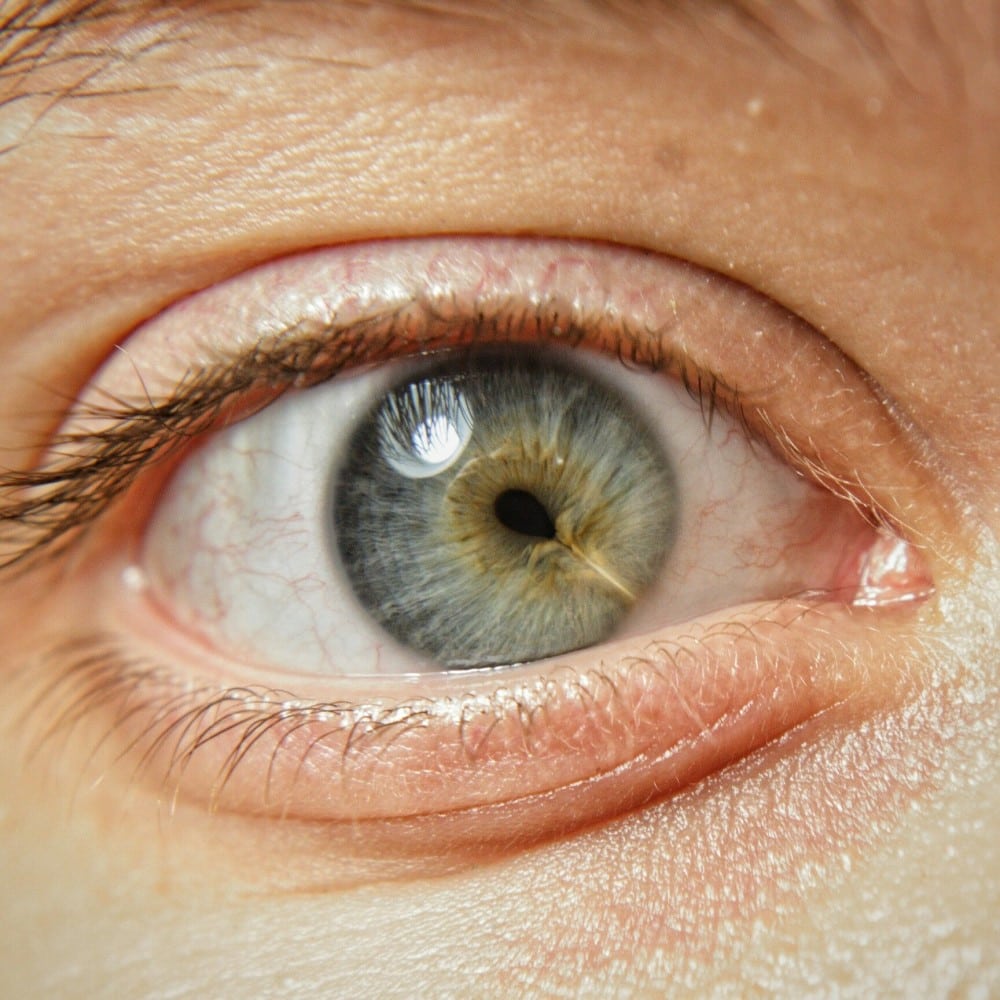
Beauty is a vague concept. While there was a set parameter for beauty at one point, we have come to challenge those superficial standards. We believe and accept that beauty comes in all different forms. In this article, we celebrate 40+ fascinating body features we may only see once in our lifetime.
Freckles
We often see models and aspire to be just as beautiful as them. The definition of beauty in the fashion industry used to be extremely narrow, and standards were super high. However, with time, people have accepted all different forms of beauty. Alice Wilson is a model of one such instance.
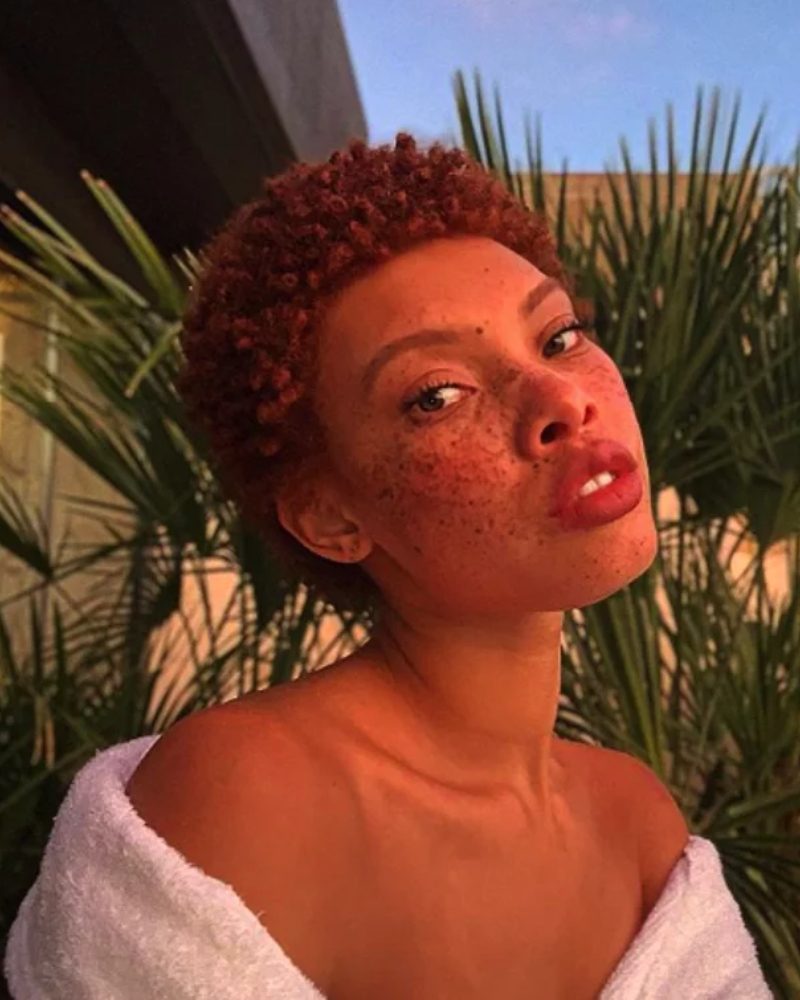
Wilson’s face is covered with beautiful freckles. And although she has brown eyes, she likes to wear one blue contact lens to show the world that beauty is all about imperfection. Because of her stunning appearance, she quickly caught the eye of several fashion elites. Today, she’s one of the most promising models.
Dwarfism
Achondroplasia is the most common type of dwarfism. Achondroplasia is a genetic condition that affects about one in 15,000 to one in 40,000 people. Dru Presta here, a fashion model and social media influencer, was born with a form of dwarfism. She is three feet, four inches.

This 24-year-old is breaking all sorts of records with her fashion sense. Now a fashion designer and brand owner, Dru proves that fashion and beauty come in all shapes and sizes! Work it, girl!
Facial Discoloration
Vitiligo is a long-term condition in which pale white patches develop on the skin. It’s caused by the lack of melanin, which is the pigment in skin. This man here posted a picture showcasing his vitiligo face patch. While most people have patches all over their body, this man only has a vitiligo patch on one side of his face.
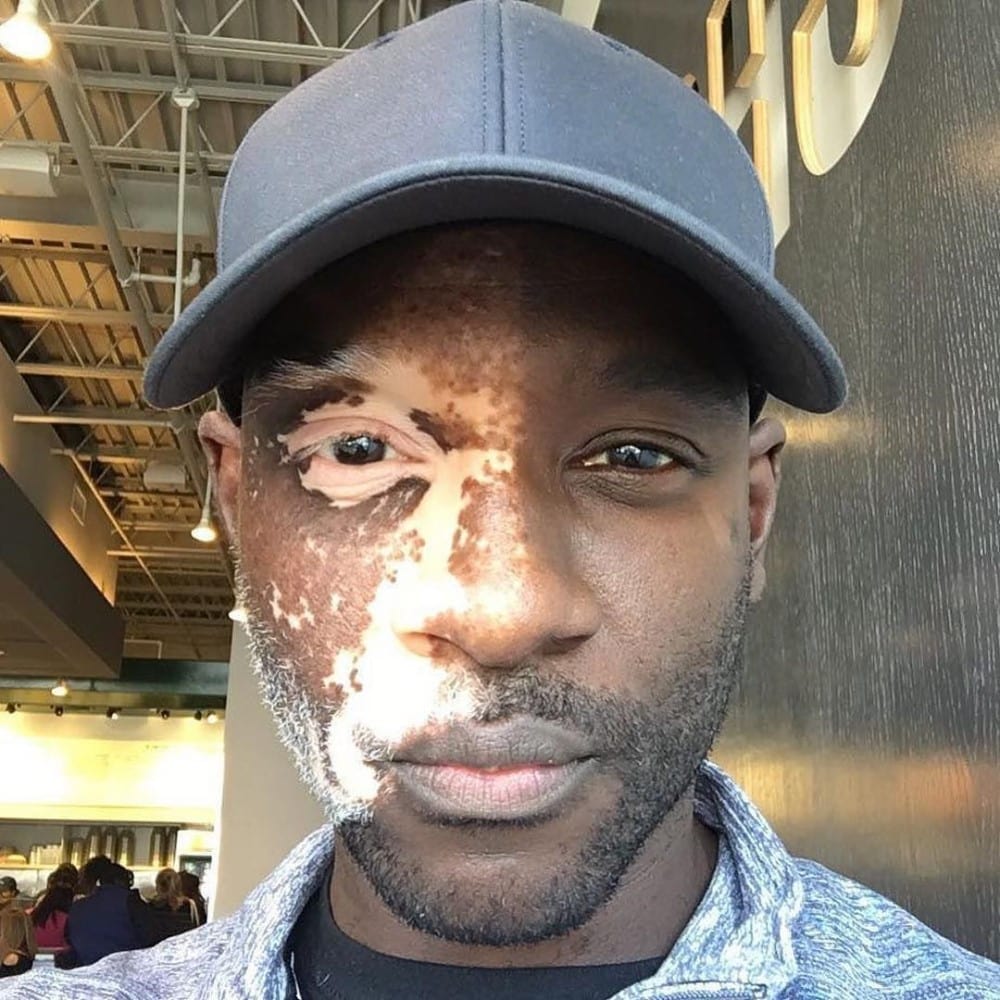
The right side of his face is affected although the left is not. Nevertheless, there’s absolutely no denying the beauty of this man’s face, and we’re glad that he’s embracing it!
6’8″
Meet 25-year-old Elisany da Cruz Silva. A Brazil native, Elisany has a form of gigantism caused by a tumor on her pituitary gland, which regulates growth. Doctors have since removed the tumor. Her height was 6’8″ when she was only 17 years old.
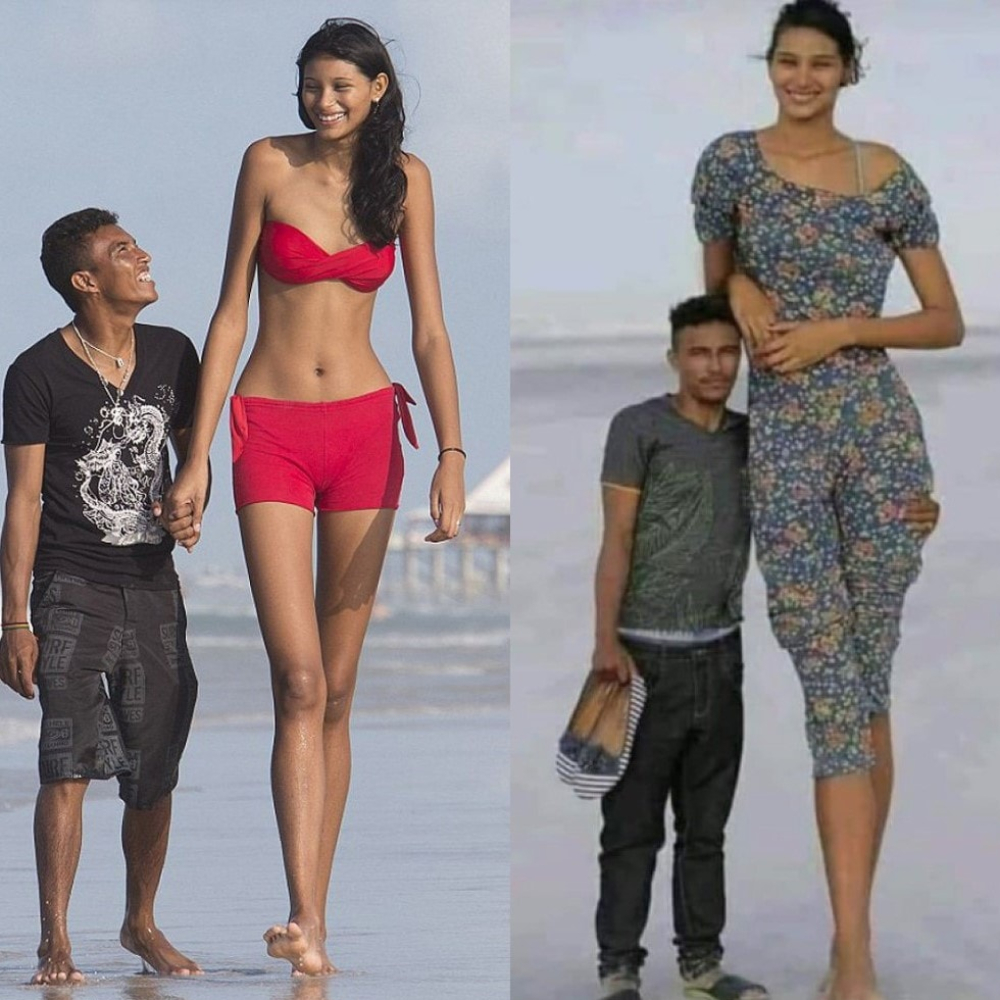
Her height does become a bit of a challenge when it comes to choosing a bed, hopping on the elevator, or getting into a car. However, it doesn’t take away from her beauty. Her unique height is what makes her that much more beautiful.
Vitiligo
As we mentioned before, vitiligo is a condition in which the skin loses its pigment cells known as melanocytes. This results in discolored patches of skin on the body. There are different kinds of vitiligo. Over time, we have seen people embrace their vitiligo.

The most notable name that comes to mind is Winnie Harlow. The model showed the world just how beautiful vitiligo is. The whole world has since admired her unique beauty — and we applaud her courage for embracing it.
Long Legs
Whether you’re short or tall, there’s no denying that we all yearn for those beautiful long legs that you can strut your stuff with. Then again, we all want what we don’t have. A Scandinavian model named Östergren rose to prominence thanks to her long legs. Standing tall at 155 centimeters, Östergren’s legs have a total length of 106 centimeters.

Now, while that all sounds fine and dandy, the model actually faced tons of ridicule throughout her life. Luckily, the Swedish model has learned to embrace them. Today, she’s a bodybuilder who’s working and thriving in her field.
Light Hair
Believe it or not but natural blondes are actually extremely rare. In fact, only two percent of people in the world are natural blondes. This means that about one in 20 Americans are natural blondes. The blonde hair is caused by a pigment called eumelanin.

Still, that doesn’t mean that blonde hair isn’t popular. Unsurprisingly, one in three women dye their locks light enough to be considered blonde when, in reality, only 16% of the adult population has naturally blond hair.
Bee Melvnin
Bee Melvnin is a model who has captivated people all over the globe with her unique and beautiful features. She truly resembles a goddess, and that she is!
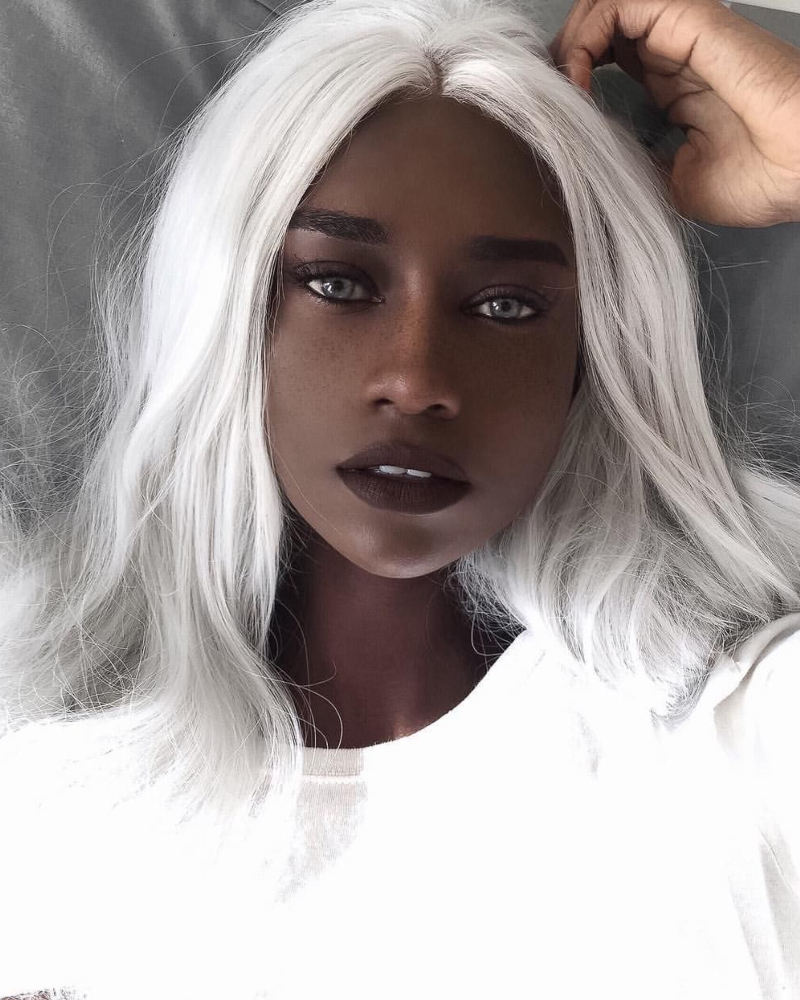
She is from The Gambia, a country in West Africa. People can’t decide what’s more captivating — her hair, her skin, or her intoxicating eyes. Still, the most beautiful thing about her is how she embraces her unique features.
Heterochromia
The eyes are a magical creation. You can learn so much about a person just by looking into their eyes. Speaking of learning, why don’t we delve deeper into this next condition?
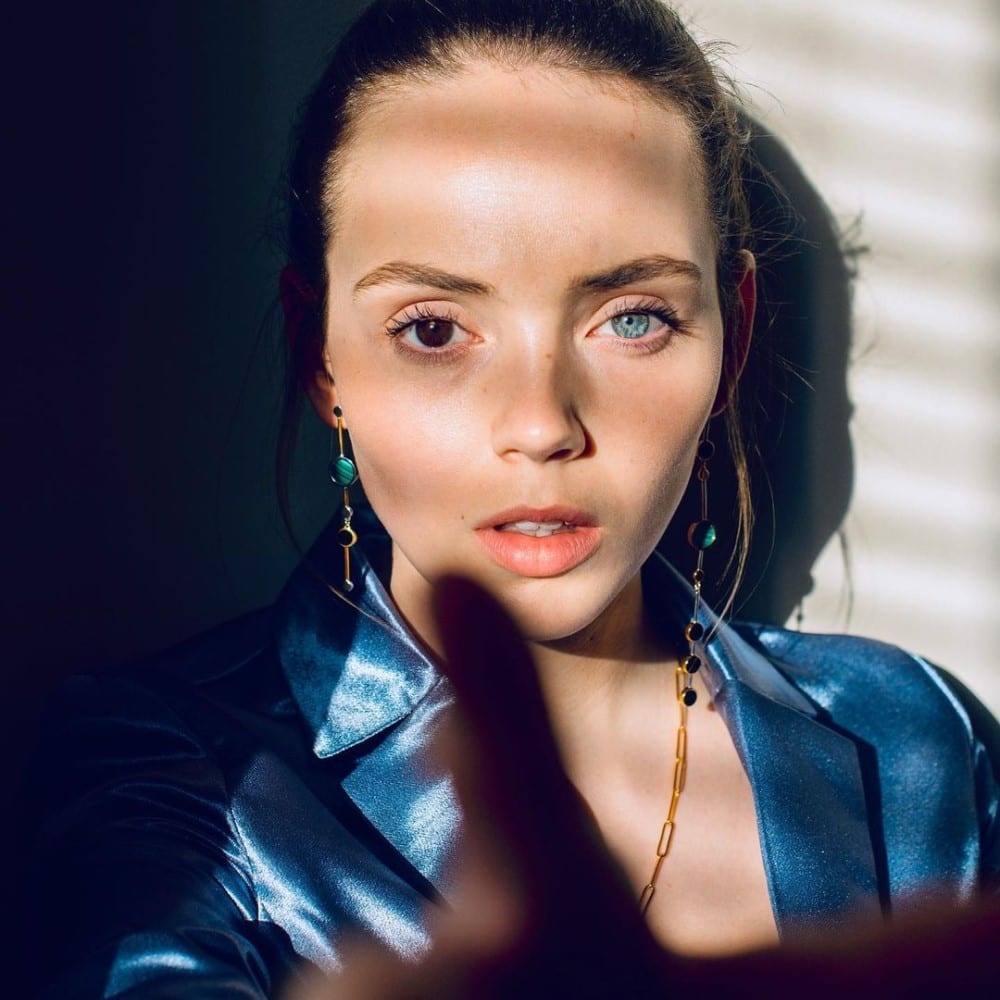
Heterochromia is the term used to describe a difference in a person’s eye color. Someone with central heterochromia has different colors within the same eye. Complete heterochromia is when they have two different colored eyes. It’s a rare condition and it doesn’t have any side effects until now.
Beauty Beard
Dakota Cooke is an Instagram influencer who opened up about a rare adrenal glandular disorder that she was born with called hirsutism. According to the influencer herself, the facial hair is the result of hormone imbalances. The disorder affects hormone production, causing her body to produce too much testosterone. At 13, fine strands began sprouting on her chin and jawline.
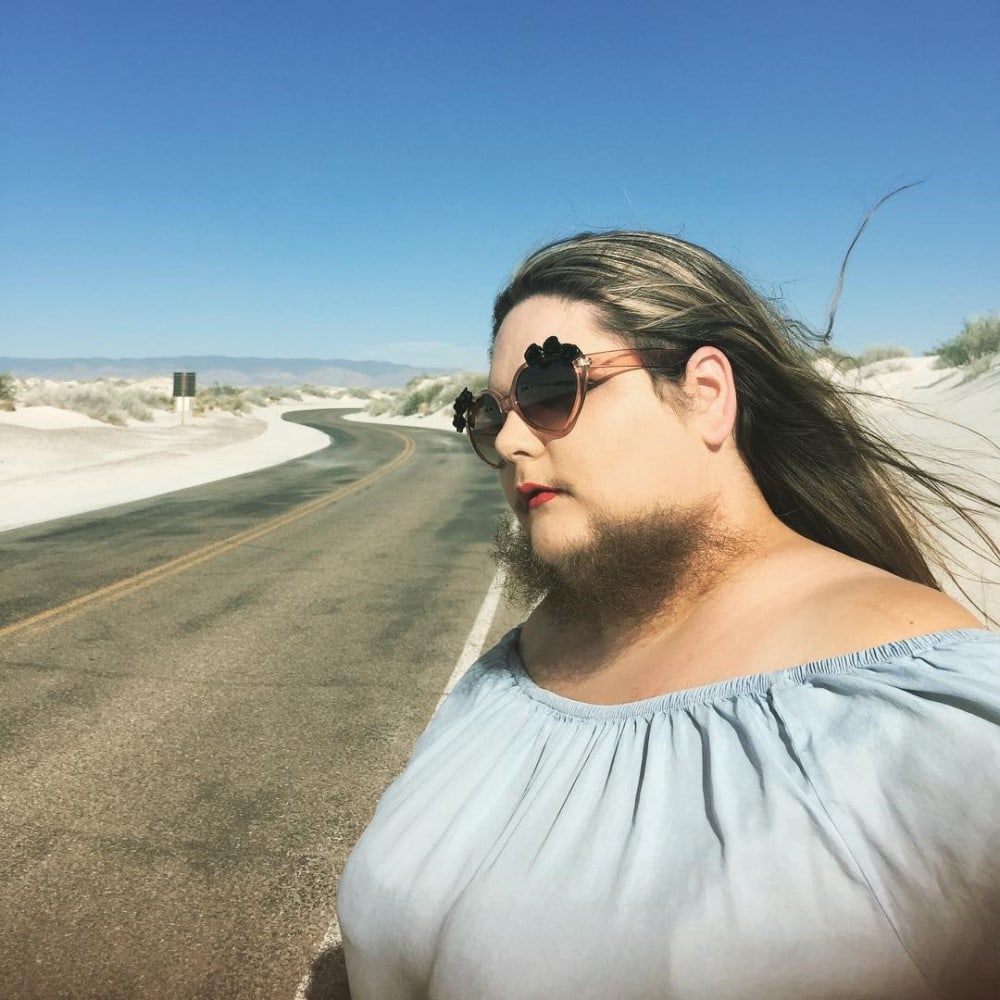
Although it wasn’t easy and it took some time, Dakota now fully embraces herself for everything that she is — and we absolutely love it! Dubbed The Bearded Lady, Dakota lives life as her authentic self and she really couldn’t be happier.
Beauty Marks
Birthmarks are often despised by people, so much so that some even go on to remove the mark at some point in their lives. Birthmarks, most of which are harmless, can form anywhere on the body. While many people dislike their visible birthmarks, there are those who embrace their individuality. Take Cassandra Naud, for instance.
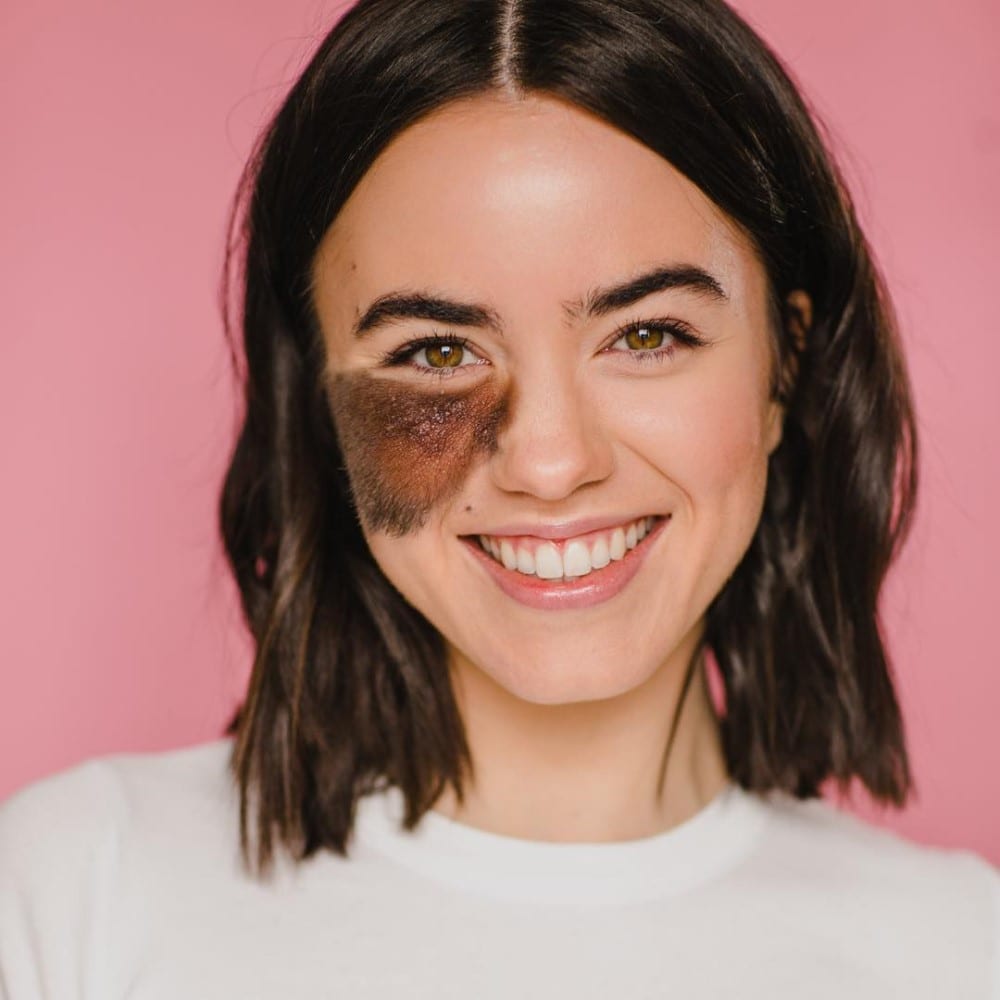
A professional dancer, Cassandra was born with a large birthmark under her left eye, and although she begged for a birthmark removal operation in her youth, she ended up refusing it after learning that it could leave her with a scar. Today, she appreciates her unique feature and loves herself exactly as she is. Inspiring!
Cat-Eye Syndrome
Let’s be real — cat eyes are absolutely mesmerizing in every aspect of the word. And there are some people on this planet who also have this feature, scientifically referred to as Schmid-Fraccaro syndrome. The defect, known as coloboma, involves the partial absence of ocular tissue in the iris, often affecting both eyes.
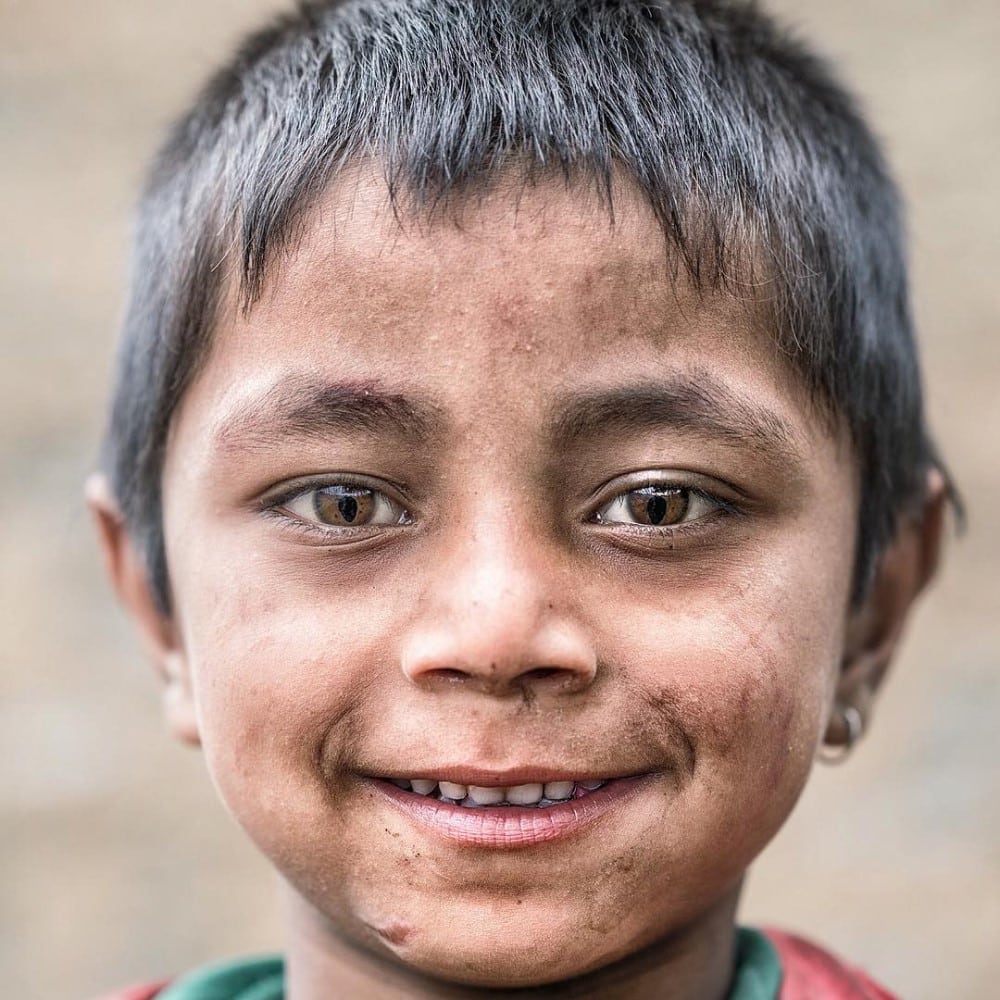
This leads to the elongated blackened area of the pupil, which resembles a cat’s eye. Not all people suffering from this syndrome exhibit this abnormality, however. About half of them have regular-looking eyes. Now, as cool as it looks, there are several medical problems associated with the condition with one of the most obvious being poor vision.
Fingerprints
Our fingerprints are all unique, meaning that no one else in the world has the exact same set of ridges and lines that you have on your fingers. While we may have similar ridges and lines, there are certain fingerprints that are only present in some people. A loop-shaped fingerprint, this feature is present among 65% of the population. Then, there are the whorl-shaped fingerprints.

This feature is present among 30% of the population. The rarest, though, is the arch-shaped fingerprint. It happens to be present in only five percent of the population — that’s pretty rare!
Red Hair
Red hair is truly a unique and beautiful feature. How many people have you met who have naturally red hair without any dye? Probably not as many as you think because this trait actually only occurs naturally in one to two percent of the human population.
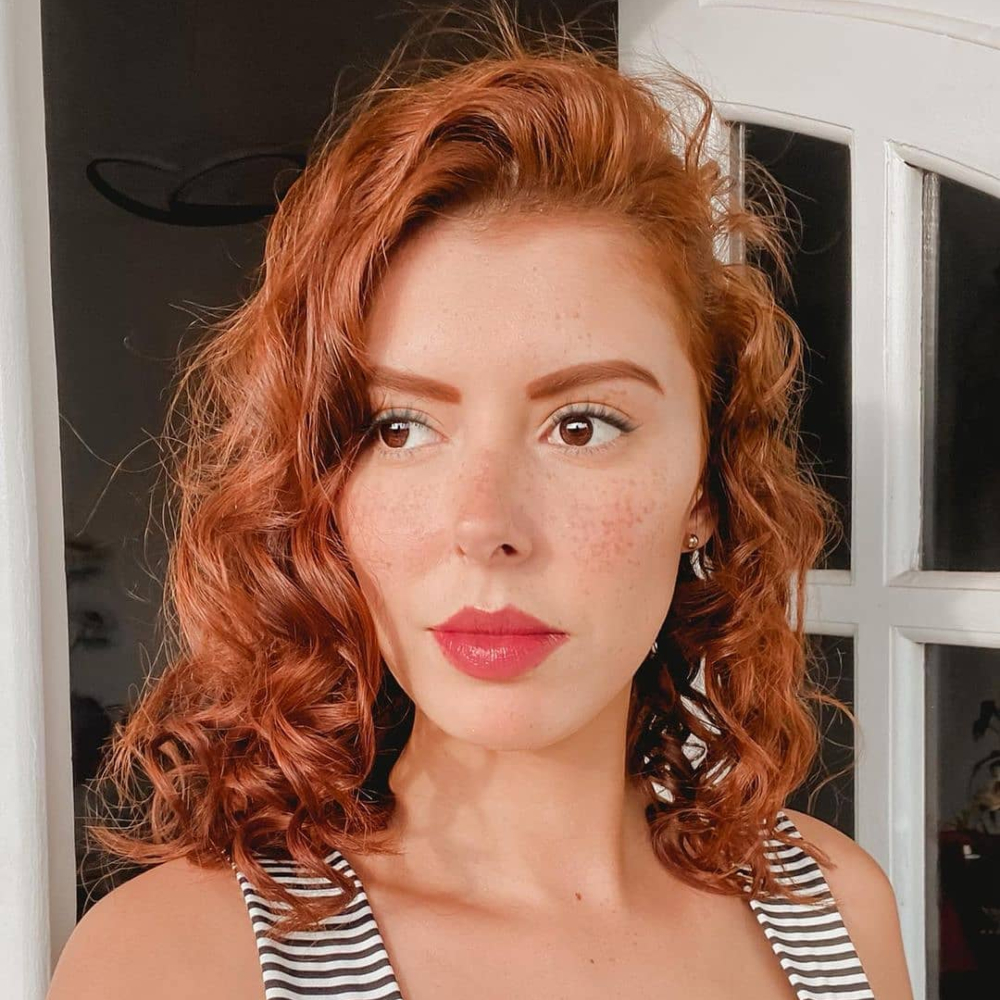
It appears with greater frequency among people of Northern or Northwestern European ancestry, and is less frequent in other populations. The feature is caused by a relatively rare recessive allele on chromosome 16. Red hair varies in hue and shade, and is associated with fair skin color, freckles, and sensitivity to ultraviolet light.
Navel
A belly button isn’t quite as unique as a fingerprint, but there are still tons of types out there. There’s a popular theory that the shape of the navel depends on how the umbilical cord was cut at birth. However, that theory isn’t true. In reality, when you’re born, the umbilical cord is cut and you have a small piece left called the umbilical stump.
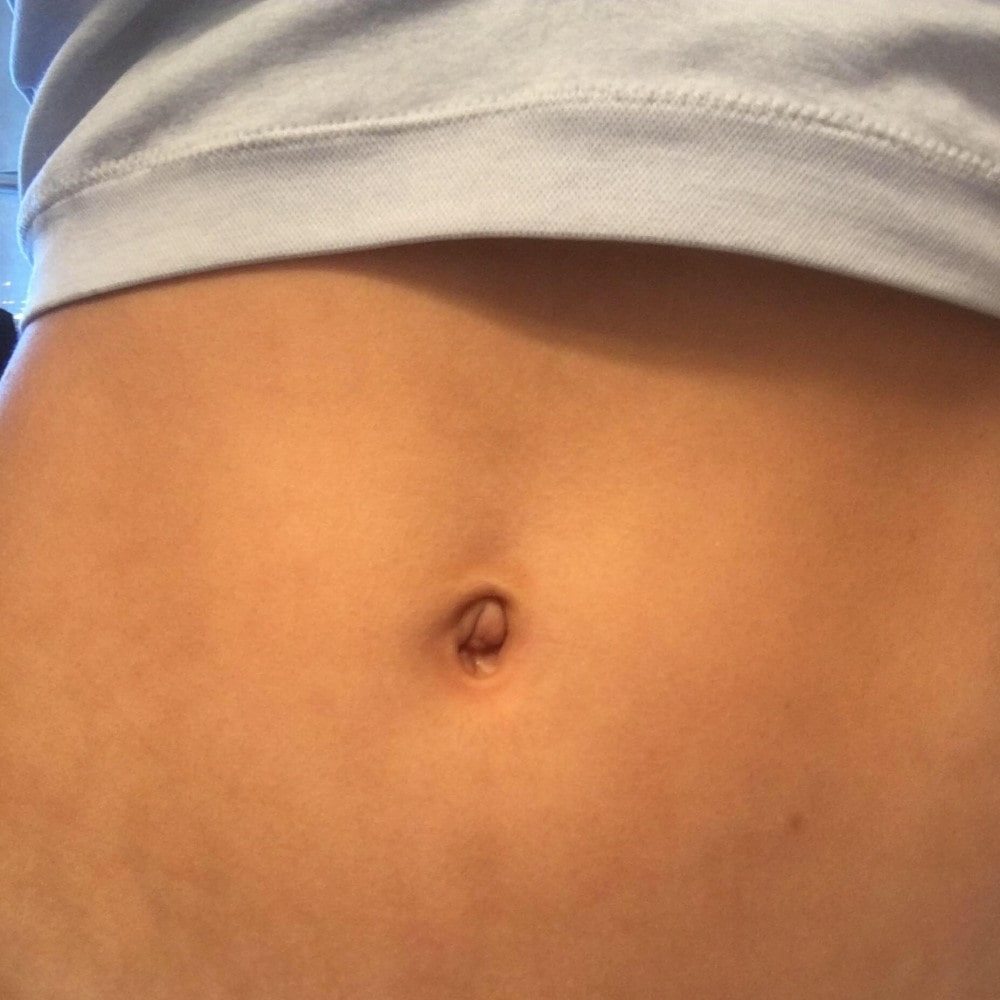
One to two weeks after birth, this stump falls off and what remains is your belly button. In other words, your belly button is essentially a scar. Whether it’s an innie or outie depends on how your skin grows as it heals. About 90% of people have innies, and the rest are outies (10%) — and some people don’t even have belly buttons, usually because they were born with a condition that affected the umbilical cord.
Right-Hearted
A rare heart condition, dextrocardia is a trate in which your heart points toward the right side of your chest instead of the left side. Being that it is a congenital condition, people are born with the abnormality. Less than one percent of the general population is born with dextrocardia. In the simplest type of dextrocardia, the heart is simply a mirror image of the normal heart and there are no other problems.
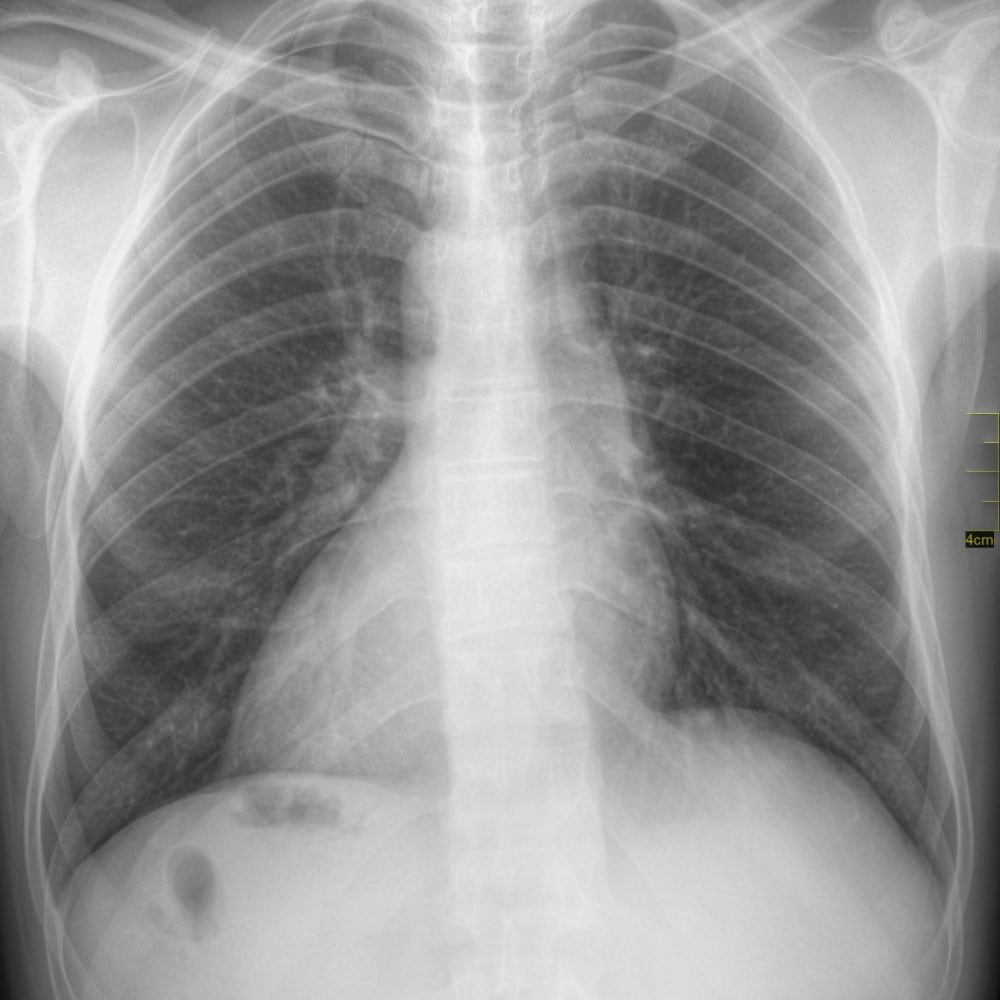
When this occurs, the organs of the abdomen and the lungs will often also be arranged in a mirror image. For instance, the liver will be on the left side instead of the right. A very serious syndrome that appears with dextrocardia is called heterotaxy — in which many of the organs are not in their usual places and may not work properly.
Albinism
Albinism is a rare genetic disorder in which there is little to no production of the pigment melanin — a pigment your body produces that determines the color of your skin, hair, and eyes. Overall, an estimated one in 20,000 people worldwide are born with oculocutaneous albinism.

There are some vision defects related to albinism, like photophobia, amblyopia, and nystagmus. Additionally, the lack of pigmentation makes albino people more susceptible to sunburn and skin cancer.
Blue Eyes
Let’s be real here — blue eyes are absolutely beautiful. Many people would do anything to have this eye color. It turns out, though, that blue eyes aren’t as common as you might think. Since blue eyes are genetically recessive, only eight percent of the world’s population has them.
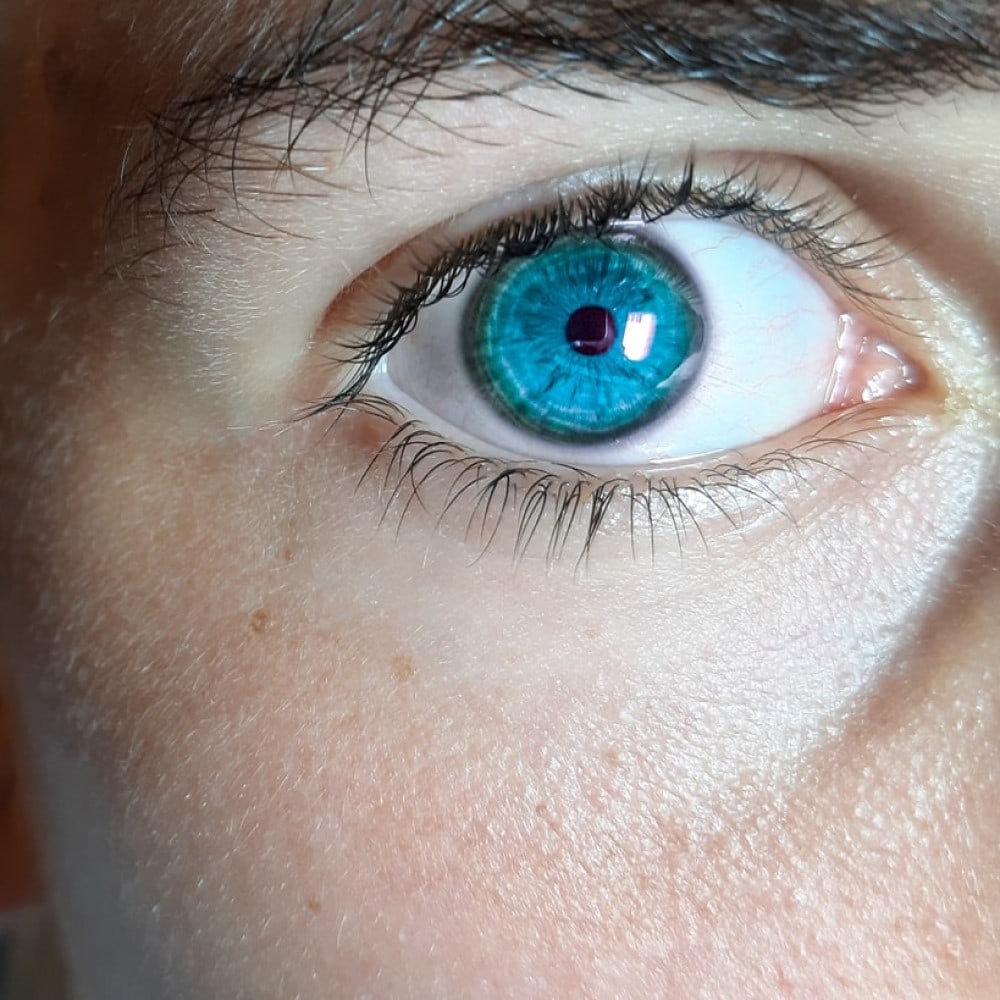
It is said that a mutation in the HERC2 gene can cause a person to be born with blue eyes, proving all the more that it’s a rare — and amazing — feature.
Morton’s Toe
Before we dive into this, look at your toes. The big toe is the largest in length for most people. However, there are people whose foot structure is a bit different. Their first toe is shorter than the second.

This is called Morton’s toe. A heredity feature, around 10% of people have it, and you might be one of them — which ain’t a bad thing! In fact, research suggests that Morton’s toe may even be an advantage in athletics.
Hair Whorl
Let’s talk about hair whorls. Some of you may have not even known that this is a thing. A hair whorl is a patch of hair that grows in a circular direction around a visible center point. Also known as crowns or swirls, hair whorls can either be clockwise or counterclockwise in direction of growth.
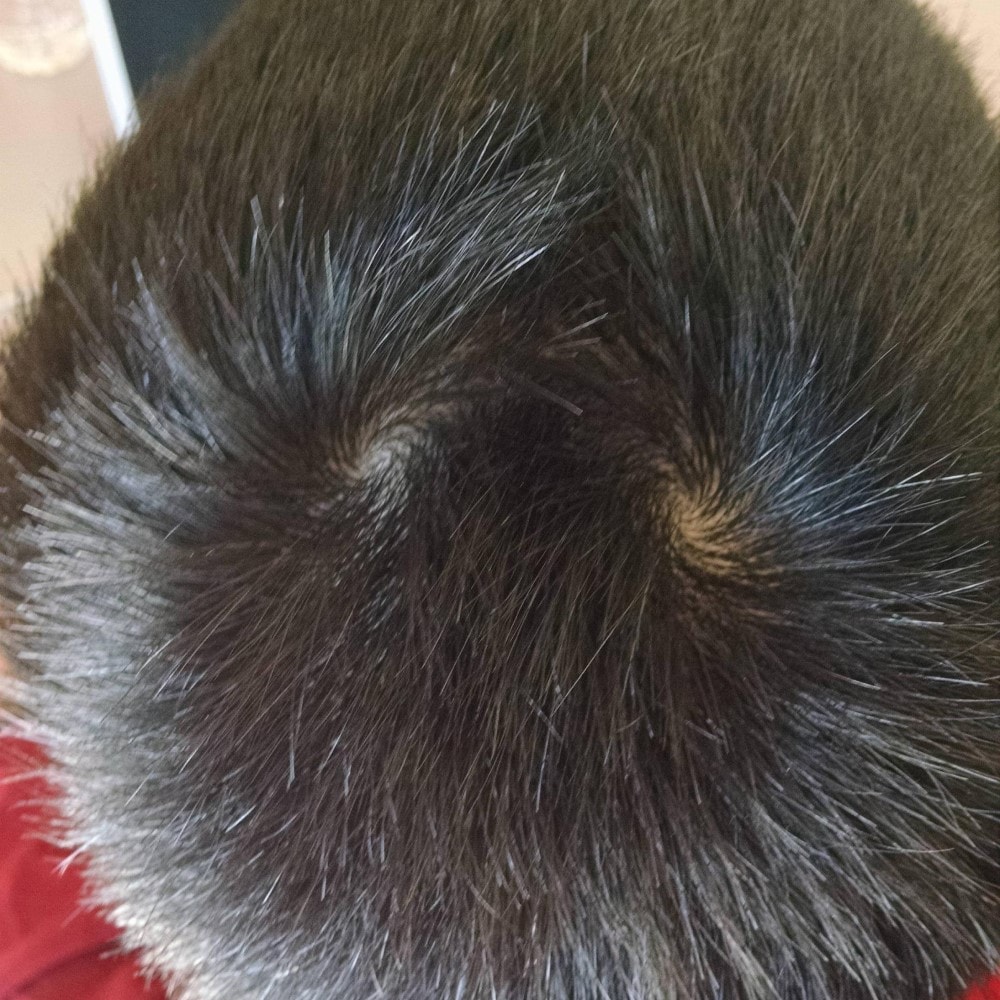
According to Amar J. S. Klar’s research — which he conducted to find a genetic link between handedness and hair-whorl direction — 8.4% of right-handed people and 45% of left-handed people have counterclockwise hair-whorls. It’s important to note, however, that Klar’s research methodology in this and other studies has been questioned.
Photic Sneeze Reflex
It’s no secret that we all sneeze. After all, it’s our body’s way of removing irritants from our nose or throat. But, did you know that there’s a genetic tendency known as photic sneeze reflex? This is a condition that causes sneezing in response to different stimuli, such as looking at bright lights. The reflex seems to be caused by a change in light intensity rather than by a specific wavelength of light.

So, if you’re one to sneeze after stepping outside and looking into the sun, then you likely have photic sneeze reflex. You might think this condition affects everyone but in reality, it only affects 18% to 35% of the world’s population.
Single Crease
A single palmar crease is basically a single crease that runs across the palm of the hand. While people most often have three creases in their palms, the single palmar crease could indicate problems with development and be linked with certain disorders — although a single crease is often normal.
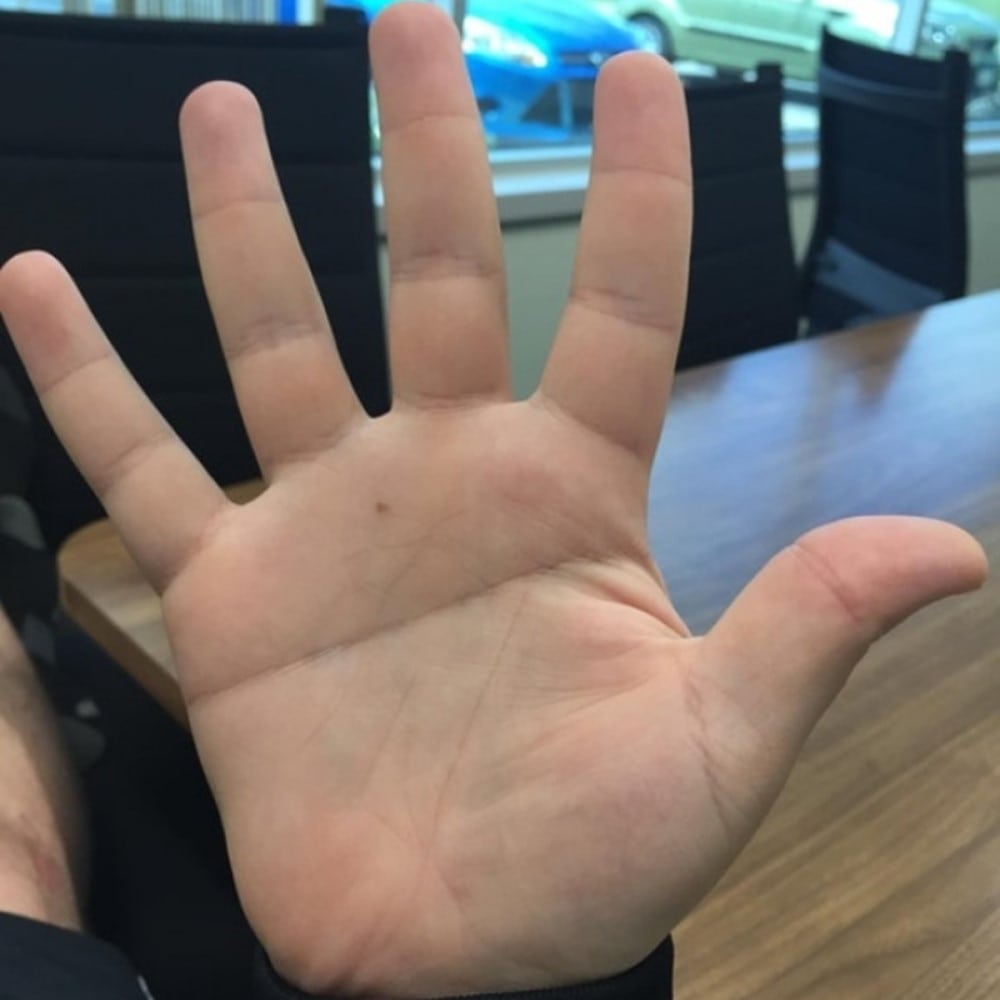
A single crease appears in about one out of 30 people, and males are twice as likely as females to have this condition. If you have it, you are one of the rarest. We guess you already know this by now, though.
Ehlers-Danlos Syndrome
Ehlers-Danlos syndrome refers to a group of inherited disorders that affect your connective tissues — mainly your joints, skin, and blood vessels.
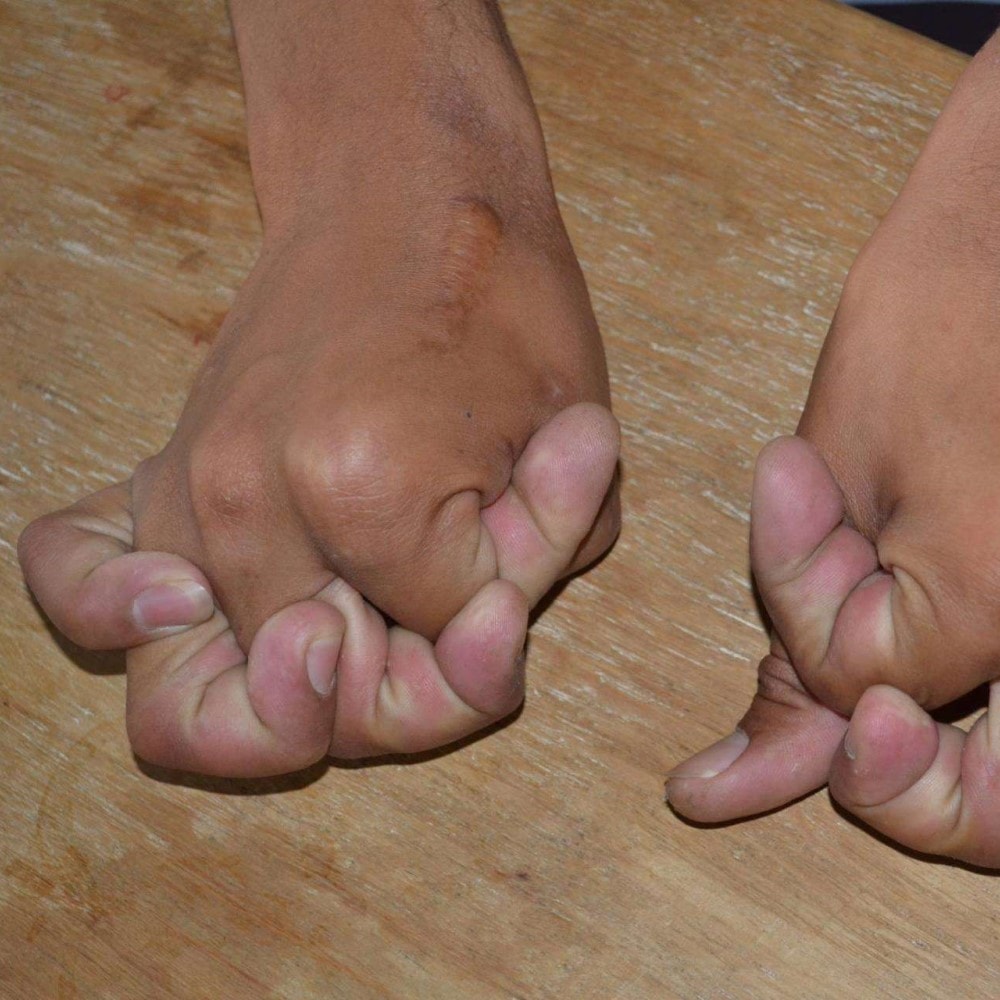
This affects your overall strength as the connective tissue provides the strength and elasticity that your body needs. The symptoms of this syndrome include fragile skin, stretchy skin, and flexible joints. However, we find this a beautiful feature to embrace, not reject.
Ectodermal Dysplasia
A large group of inherited disorders, ectodermal dysplasia is characterized by a primary defect in hair, teeth, nails, or sweat gland function. It can also affect the ears, eyes, lips, mucous membranes of the mouth or nose, and the central nervous system.
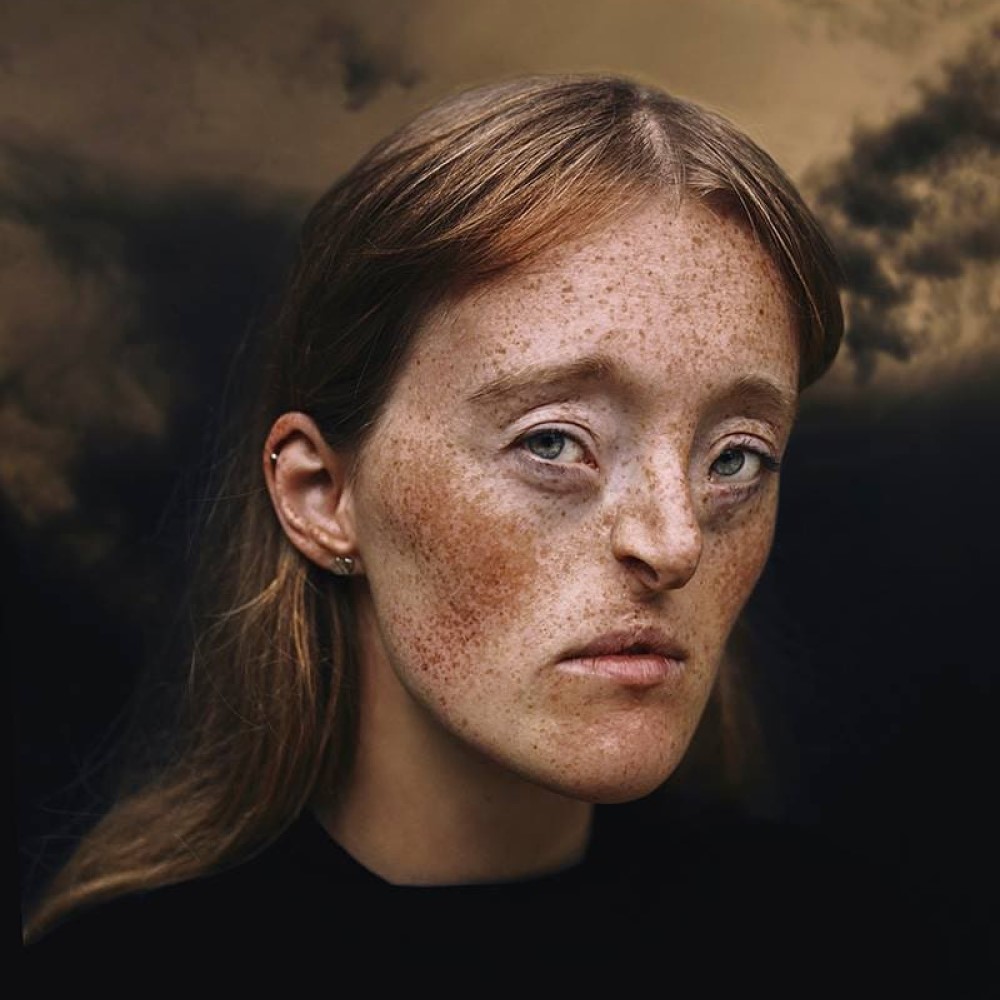
Now, although more than 150 different ED syndrome exist, only around one in 7,000 people have been diagnosed with an ectodermal dysplasia condition worldwide — meaning that it’s rare and unique. Today, models with ED conditions are taking the fashion world by storm.
Anisocoria
Anisocori refers to a condition in which the size of the eyes’ pupils is not of equal proportion. It affects up to 20% of the population and is often entirely harmless, but can be a sign of more serious medical problems. The condition is defined by a difference of 0.4 mm or more between the sizes of the pupils of the eyes.
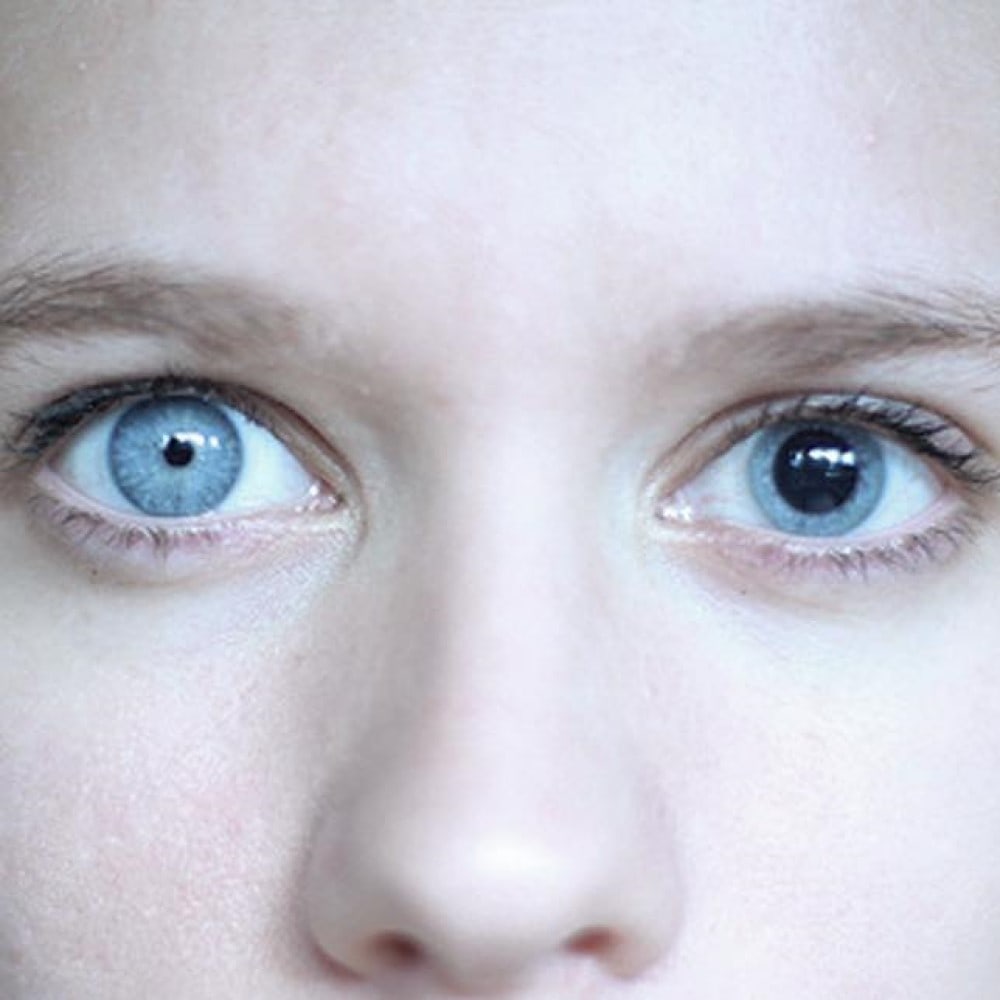
Causes of anisocoria range from benign, or normal, to life-threatening conditions. For the most part, though, anisocoria is usually a benign finding that is unaccompanied by other symptoms. Fun fact — English singer David Bowie exhibited anisocoria, owing to a teenage injury.
Dermatographia
Often referred to as skin writing, dermatographia is a condition in which lightly scratching your skin causes welts or raised, red lines wherever you’ve scratched. Although it’s not a serious condition, it can be uncomfortable. About two to five percent of the population suffers from this problem. Still, it’s considered one of the more prevalent forms of hives and accounts for seven to ten percent of all cases of skin rashes and swelling.

Luckily, episodes of dermatographia usually come and go quickly. A condition often seen in young adults, researchers don’t believe that there’s a strong genetic link to dermatographia. There are certain factors that may make the condition worse including exercise, heat, cold, stress, and vibration among others.
Waardenburg Syndrome
Waardenburg syndrome refers to a group of rare genetic conditions that can cause hearing loss and changes in coloring (pigmentation) of the hair, skin, and eyes. While most people with Waardenburg syndrome do have normal hearing, moderate to profound hearing loss can occur in one or both ears.
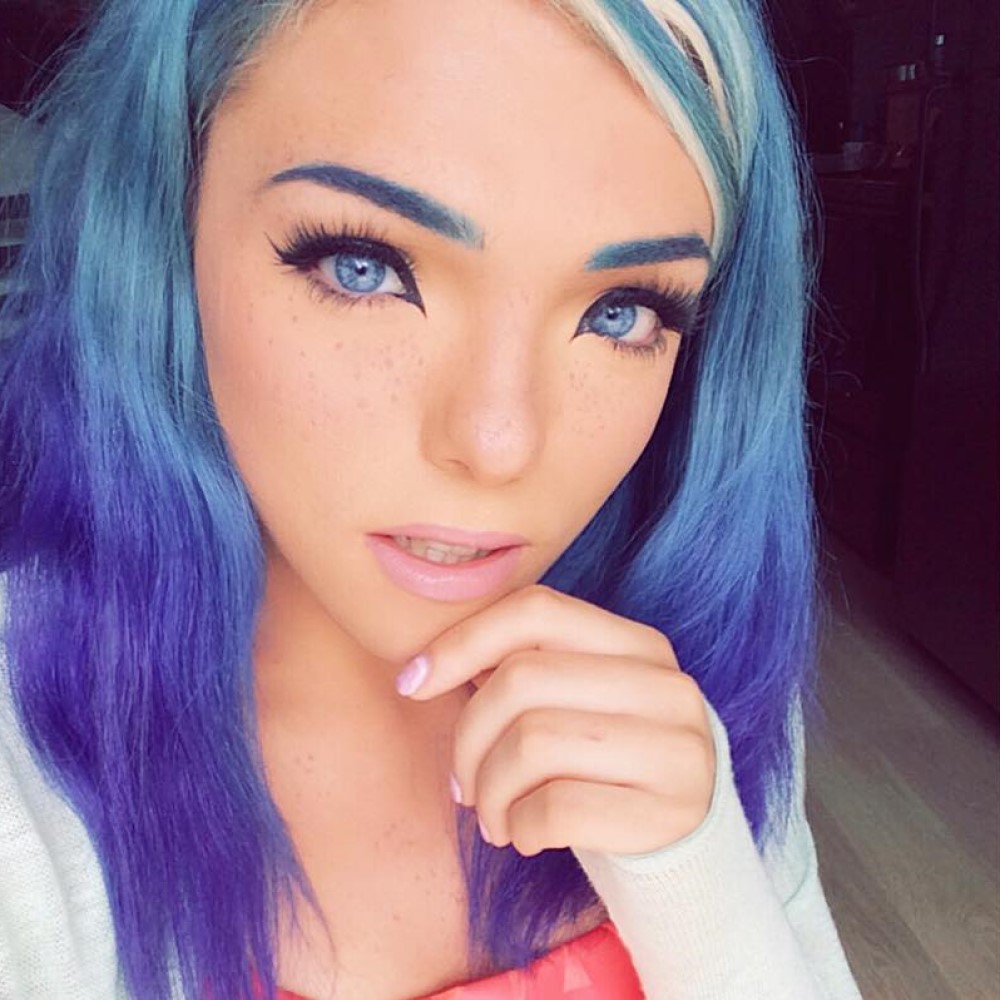
The condition is characterized by at least some degree of congenital hearing loss and pigmentation deficiencies. This can include but is not limited to bright blue eyes (or one blue eye and one brown eye), a white forelock, or patches of light skin. One in every 42,000 people suffer from Waardenburg syndrome.
Argyria
Believe it or not but excessive exposure to certain compounds and chemicals can really take a toll on your body. Take argyria, for example. A rare skin condition, argyria can occur if silver builds up in your body over a long time — meaning overexposure to chemical compounds of the element silver or to silver dust can actually turn your skin, eyes, internal organs, nails, and gums a blue-gray color.
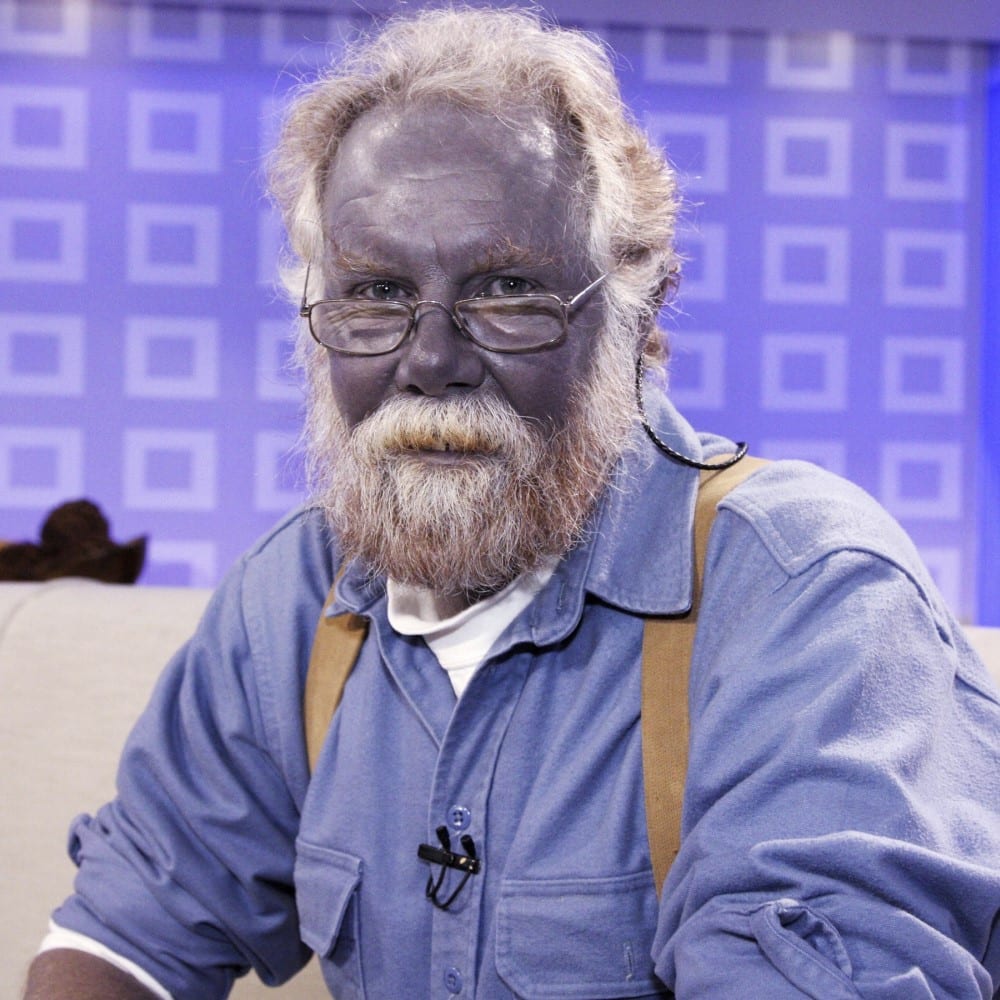
Unfortunately, that change in your skin color is permanent. Luckily, the condition is rare and not life-threatening.
Distichiasis
We’re no strangers to the fact that people love eyelashes. Today, there are all sorts of lash treatments including lash extension, lash perm, and even lash tint. However, there are some people in the world that are blessed with two rows of eyelashes.
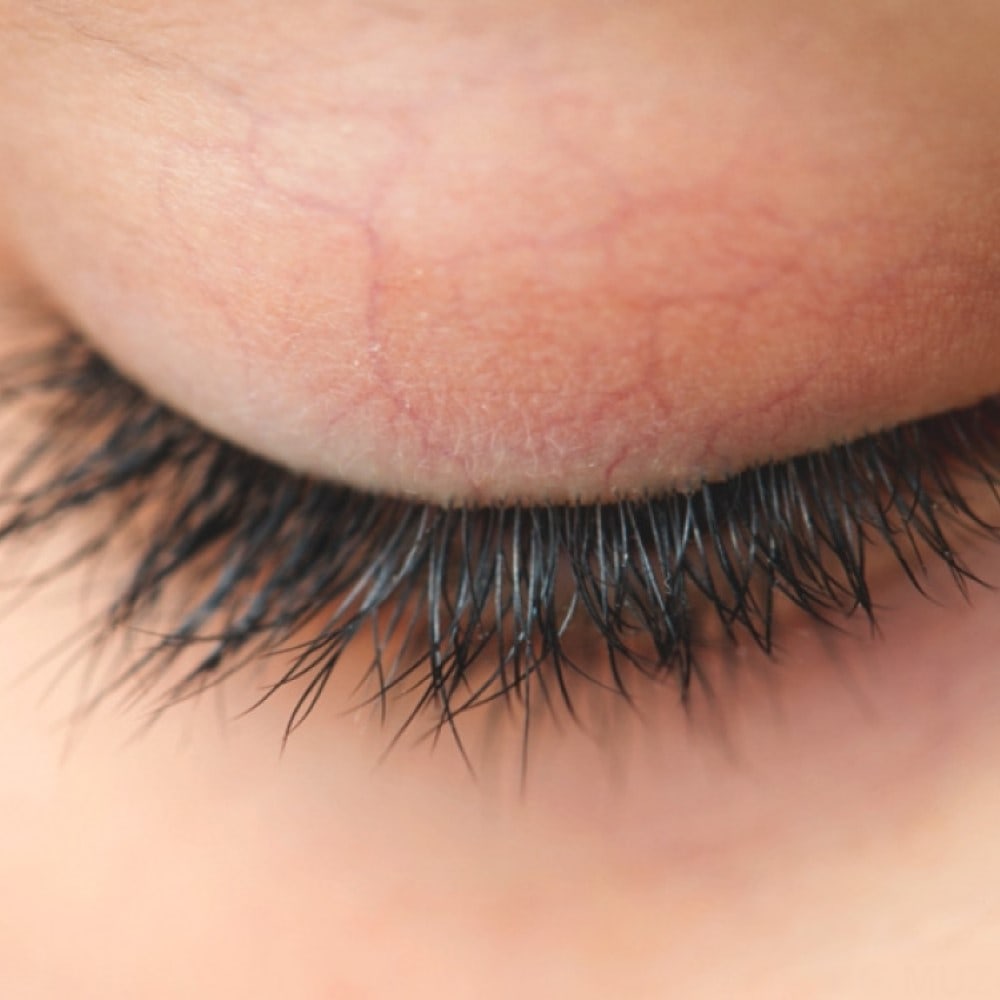
This is the result of some sort of defect., a condition called distichiasis. This condition is often associated with photophobia, irritation of the cornea, conjunctivitis, styes, and droopy eyelids.
Tetrachromacy
Tetrachromacy is a rare eye condition that allows for increased color vision. While the normal human eye has three cones, people with tetrachromacy are born with four distinct color perception channels.
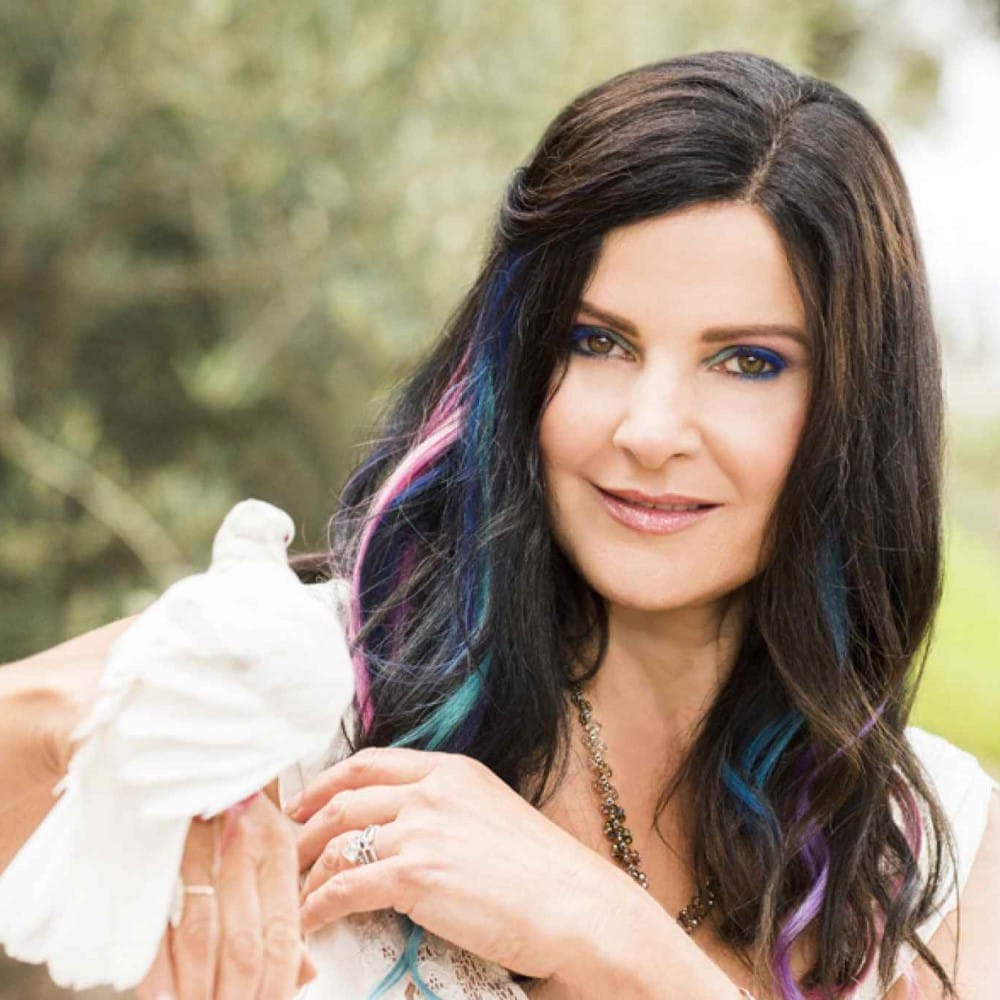
Research shows that it’s more common in women than in men. A 2010 study suggests that nearly 12 percent of women may have this fourth color perception channel. Men are less likely to be tetrachromats. And basically, this tiny percentage of people can see “invisible” colors that no one else can perceive.
Eye Scar
A storm erupted on Reddit when a man posted a picture of his eyes. In the photo, you can see a scar on his pupil — a scar the anonymous user was born with. Naturally, the image went viral being that it’s one of the coolest eyes that people have ever come across.
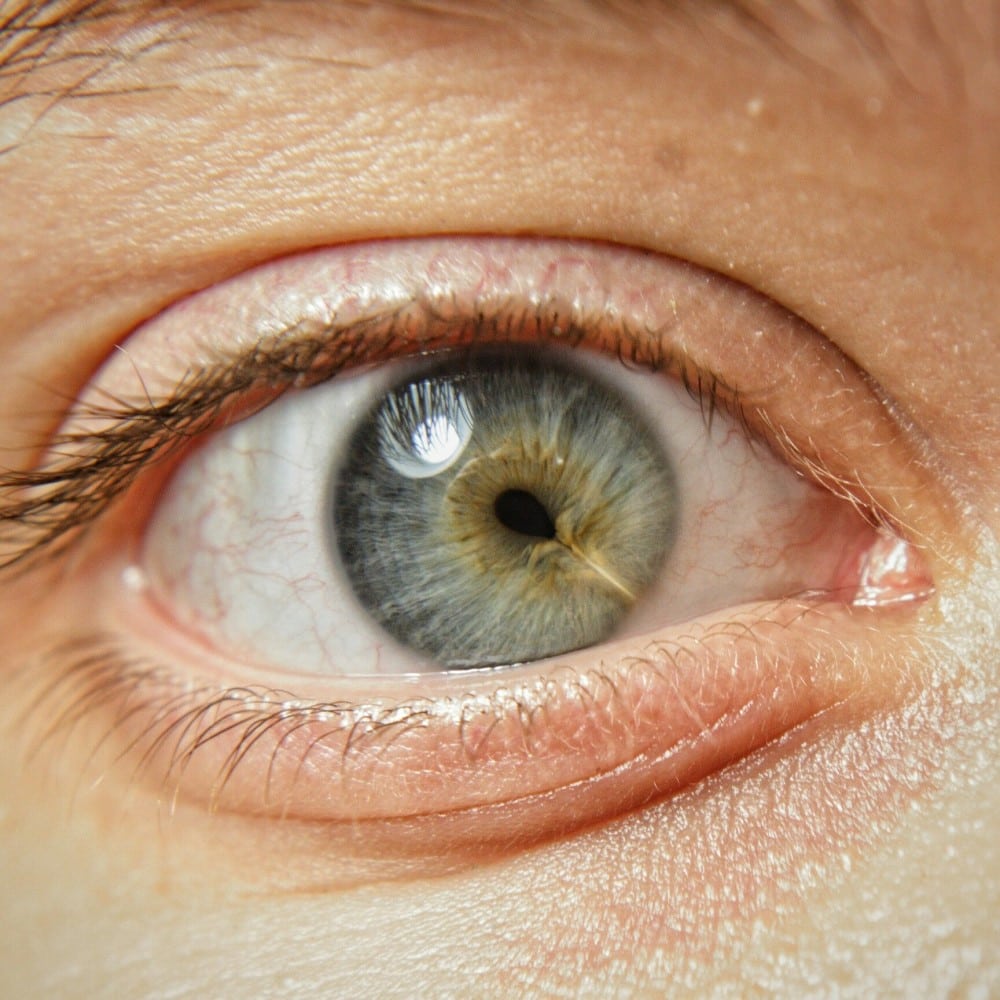
While we’re not entirely sure what the exact cause of this feature is, we do know one thing for sure — it’s as beautiful as it is rare.
Big Ears
Ukraine model Arina Lubiteleva has embraced her big ears. Now an international model, Arina has racked up over 150,000 followers on Instagram. She wants to inspire women out there to be proud of the way they look.
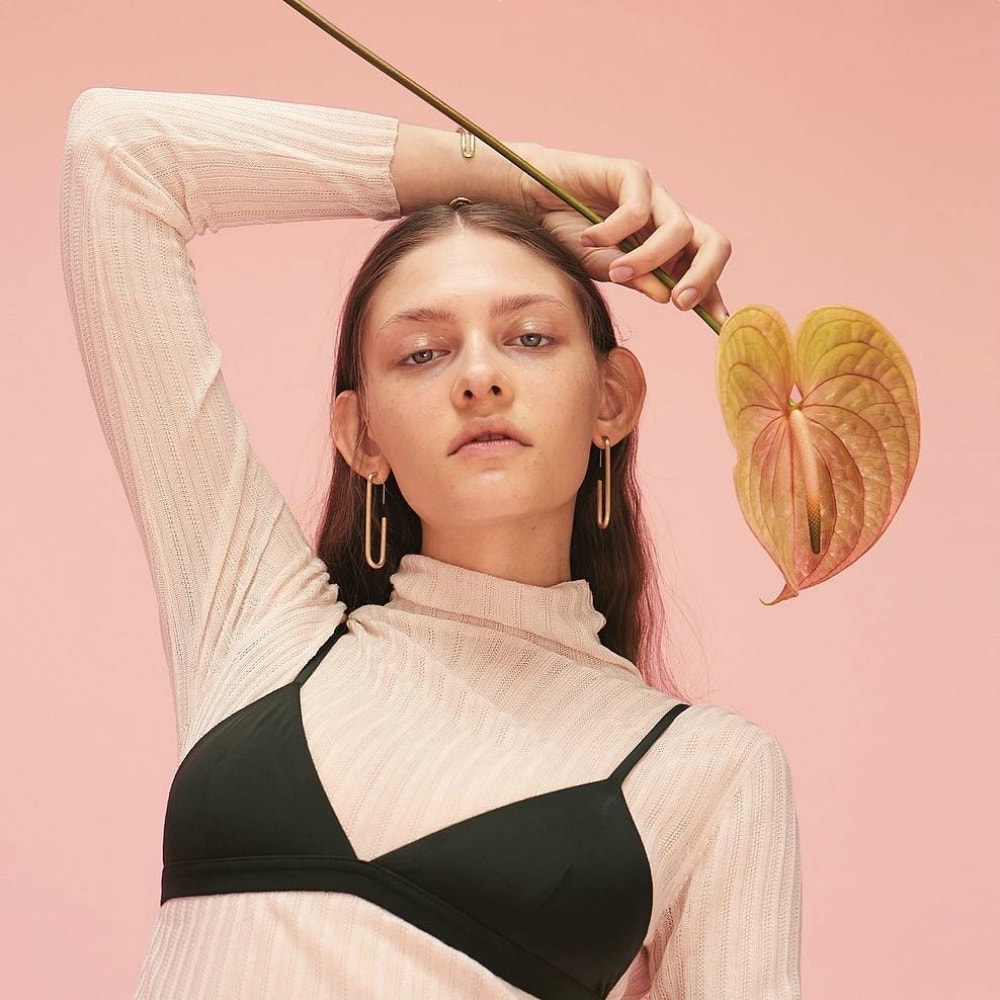
Something we’re all trying to learn. She has embraced her imperfections and flaws in every way she can. A beautiful woman who knows her worth, we should all take a page out of Arina’s book.
Wisdom Teeth
We all know that wisdom teeth are the final set of molars that you get in your late teens or early 20s. It’s like a final reminder your body gives you to let you know that you’re growing up.
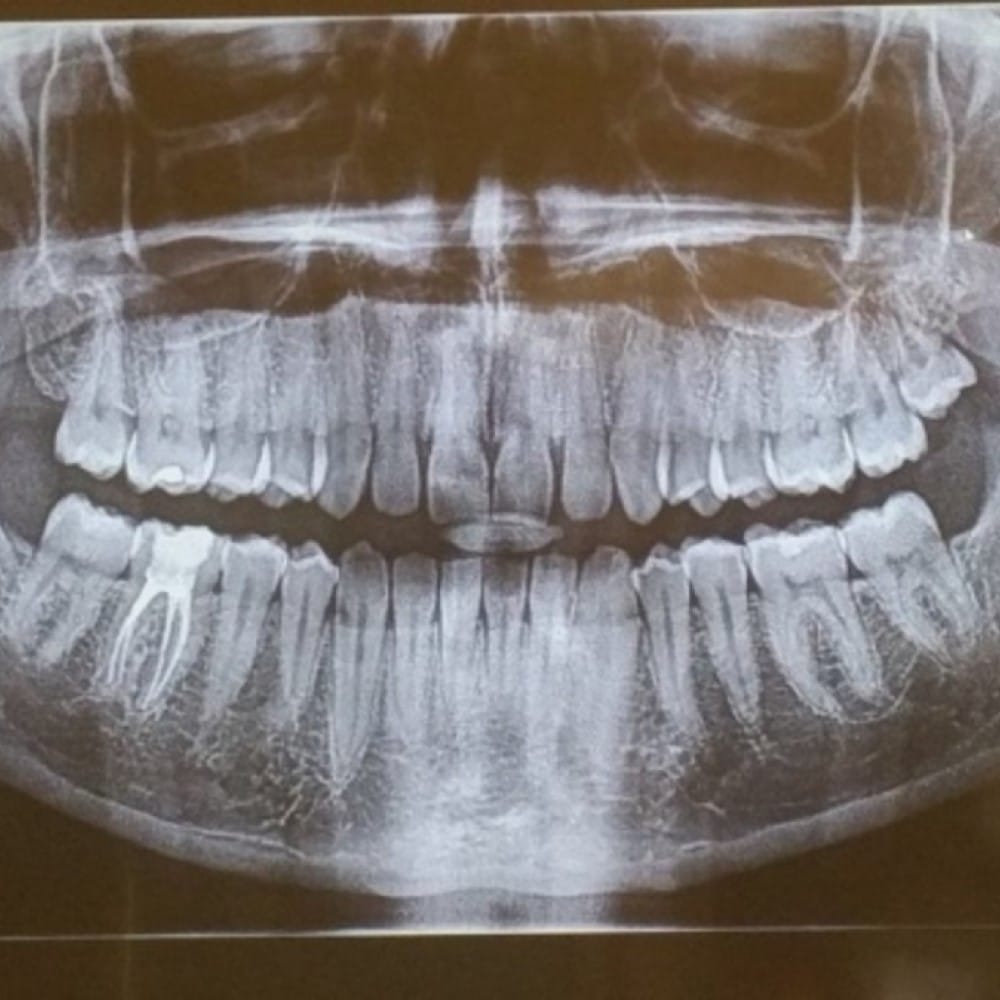
However, did you know that 20% to 25% of the human population is born with one to three wisdom teeth, and 35% is born without any wisdom teeth at all? It’s linked to a gene called PAX9.
Perfect Pitch
Absolute pitch, often called perfect pitch, is a rare ability of a person to identify or re-create a given musical note without the benefit of a reference tone.
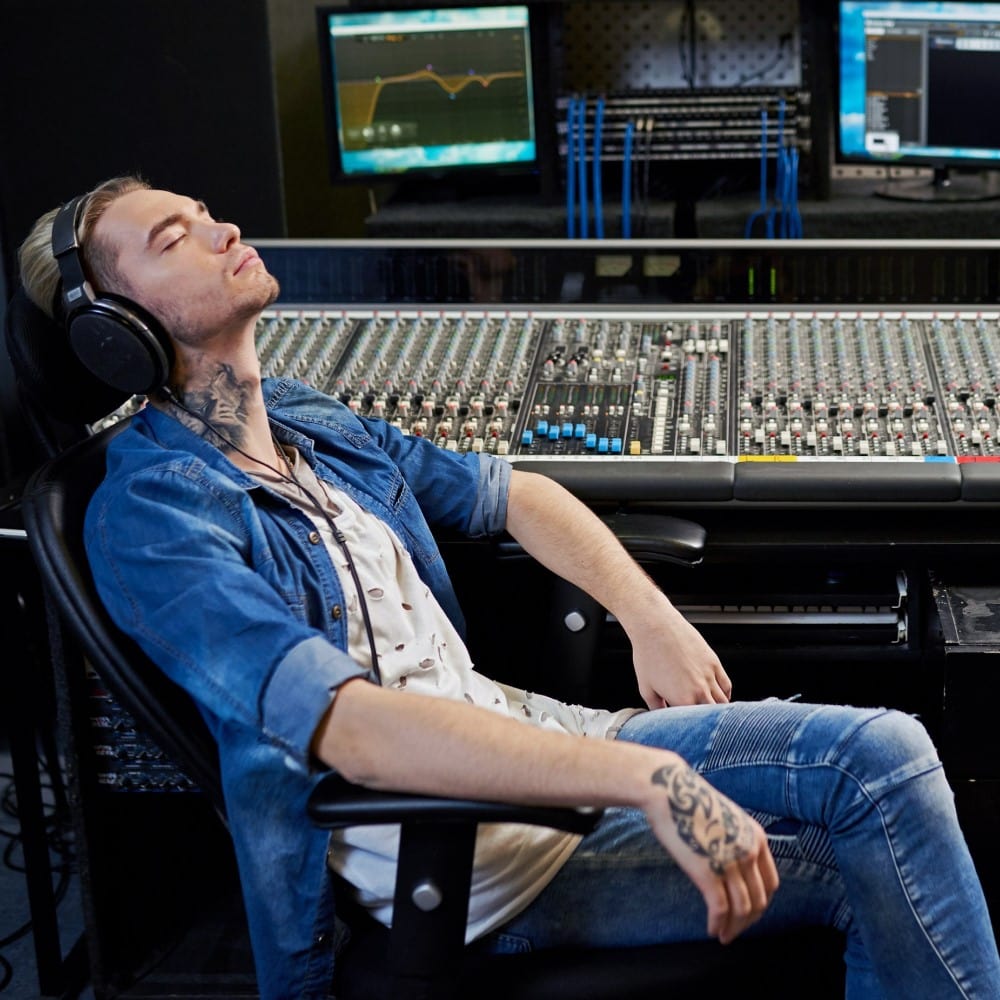
One in every 10,000 people has a perfect pitch. However, it was discovered recently that you can develop a perfect pitch as an adult — although it will require perseverance and training for a long time.
Sleep
Sleep — one of the most loved, not to mention crucial activities for the human body. As we grow up, we tend to appreciate sleep more and more. However, there are people who have trouble sleeping. This can then result in different complications, as your body needs sleep in order to thrive and survive.
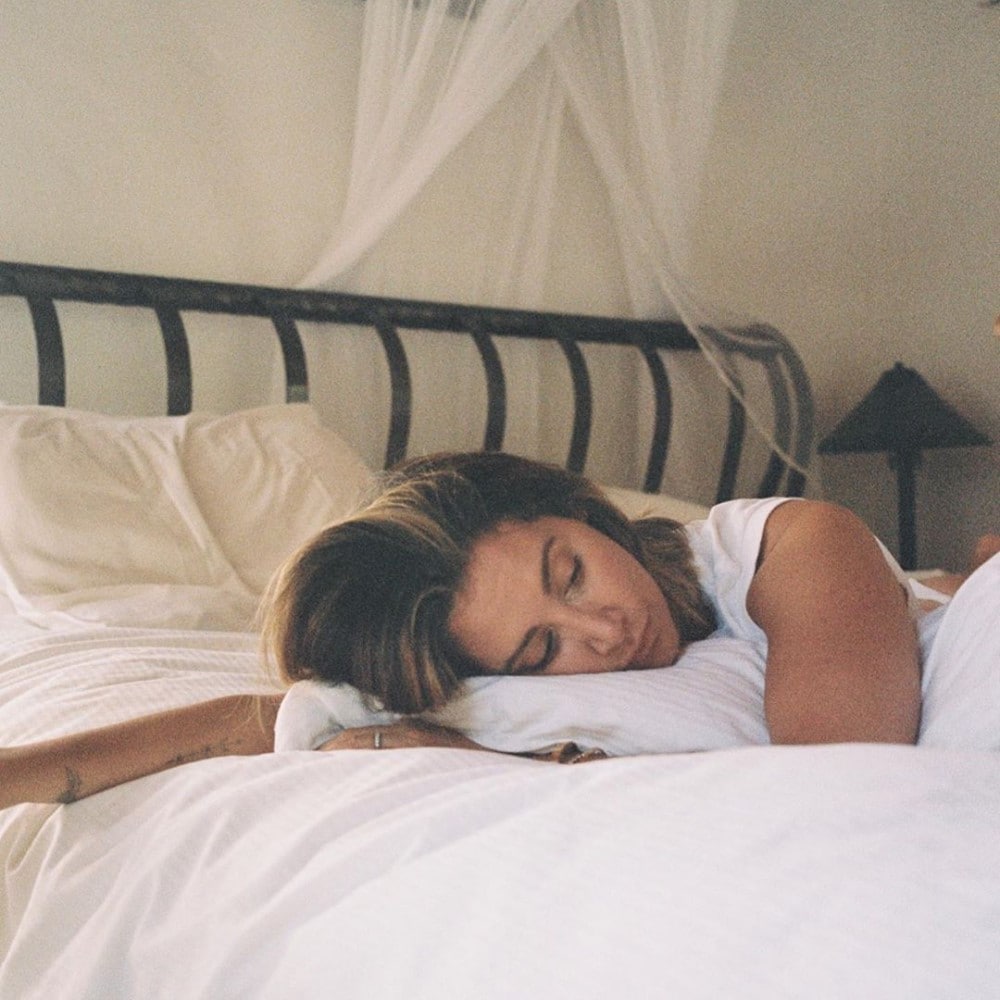
What you may have not known, though, is that there’s a specific gene called BHLHE41. If you have this gene, you are genetically resistant to sleep deprivation. In other words, you can enjoy the benefits of a full night’s sleep even if you’ve had fewer hours of rest.
Alopecia
Alopecia is a condition that results in baldness or hair loss. It is one of the most common disorders in the world and can affect both men and women. There are multiple types of alopecia disorders, and hair loss can be caused by a variety of factors including genetics.

Mặc dù không có cách chữa trị chứng rụng tóc nhưng có một số phương pháp điều trị. Một số người, như người mẫu Therese Hansson đến từ Thụy Điển, đã chọn cách chấp nhận chứng hói đầu của mình. Hansson truyền cảm hứng cho những phụ nữ khác để có cái nhìn xa hơn nhận thức của xã hội về vẻ đẹp phải như thế nào.
Cắt cụt bẩm sinh hoặc dị tật
Dị tật chân tay bẩm sinh có thể dẫn đến chân tay không thể hình thành bình thường hoặc thậm chí không hình thành. Trong khi một số người có thể chọn sử dụng chân tay giả thì những người khác lại chọn cách ôm lấy cơ thể đặc biệt của họ.

Người mẫu Kanya Sesser bị b.ỏ rơi ngay sau khi sinh ra và bị b.ỏ lại bên ngoài một ngôi chùa Phật giáo Thái Lan. Năm tuổi, cô được nhận nuôi và chuyển đến Hoa Kỳ. Hiện nay cô không chỉ là người mẫu mà còn là vận động viên lướt sóng, trượt ván, trượt tuyết và bóng rổ. Cô quyết định không để tình trạng của mình ảnh hưởng đến cuộc sống của mình và nói: “Không có chân thì không có giới hạn”.
Hội chứng tóc không thể chải được
Mặc dù tất cả chúng ta đều có một hoặc hai ngày có mái tóc xấu, nhưng những người bị ảnh hưởng bởi hội chứng này phải vật lộn với mái tóc của mình mỗi ngày. Hội chứng tóc không thể chải, đôi khi được gọi là tóc thủy tinh, dẫn đến tóc xoăn và không thể chải phẳng.

Tình trạng này thường xuất hiện trong thời thơ ấu nhưng có xu hướng biến mất ở tuổi thiếu niên. Tóc không thể chải thường có màu rất nhạt và mọc từ da đầu theo nhiều hướng. Người ta tin rằng tình trạng này là do đột biến gen làm thay đổi thân tóc.
Mề đay lạnh (Mề đay lạnh)
Rất ít người thích ứng phó với thời tiết lạnh, nhưng đối với những người bị nổi mề đay do lạnh, nhiệt độ giảm mạnh có thể dẫn đến những phản ứng nghiêm trọng. Những người mắc bệnh này phát triển phát ban trên da tiếp xúc với nhiệt độ lạnh.
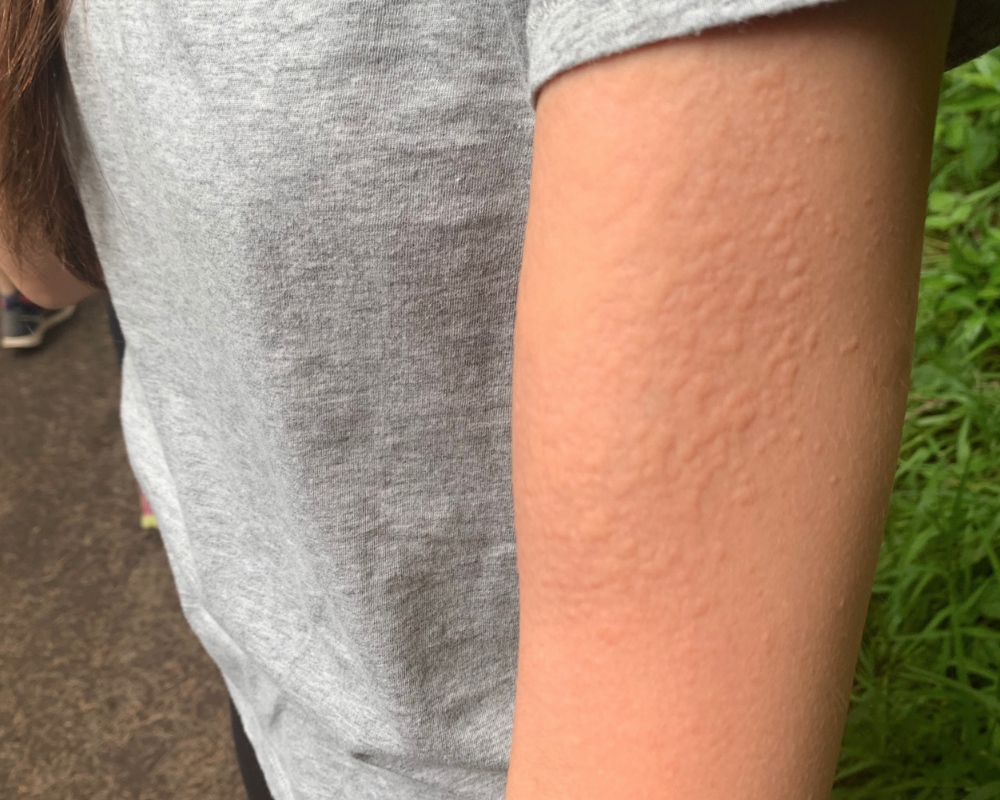
Các bác sĩ thường chẩn đoán chứng rối loạn hiếm gặp này bằng cách ấn một viên đá vào da người bệnh. Trong khi hầu hết những người mắc bệnh đều bị ngứa và nổi mề đay, chứng rối loạn này có thể gây ra sốc phản vệ. Cánh tay của người này bị nổi mề đay sau khi ra ngoài chỉ một thời gian ngắn.
Tăng sắc tố hoặc nám
Có con là một trải nghiệm tuyệt vời đối với bất kỳ bậc cha mẹ nào. Thật không may, mang thai có thể dẫn đến thay đổi nội tiết tố và ảnh hưởng đến cơ thể theo nhiều cách khác nhau.
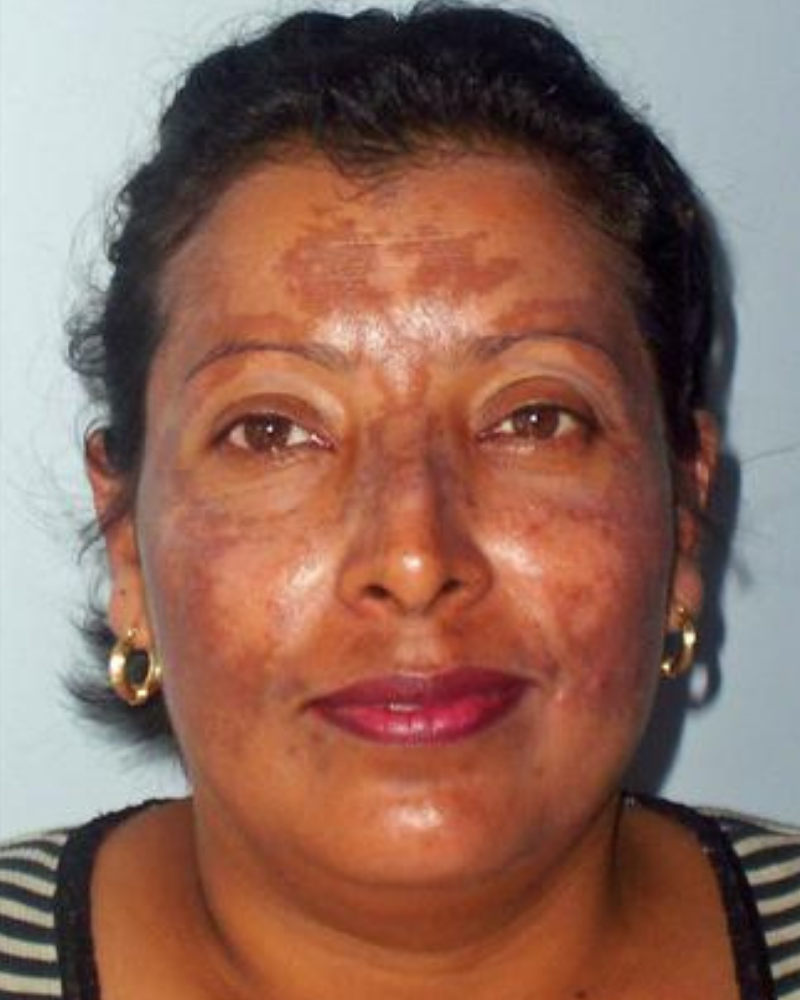
Sự thay đổi nội tiết tố khi mang thai có thể dẫn đến việc sản xuất quá mức các tế bào sắc tố trên da của chúng ta. Điều này có thể dẫn đến tình trạng gọi là nám, nơi có thể xuất hiện các mảng màu nâu sẫm hoặc xám. Các mảng có thể xuất hiện dưới dạng tàn nhang nhỏ hoặc có thể che phủ toàn bộ khuôn mặt. Tình trạng này thường được gọi là “mặt nạ thai kỳ”.
bệnh vảy cá
Ichthyosis là một chứng rối loạn da di truyền khiến da dày, khô và có vảy. Cái tên Ichthyosis xuất phát từ tiếng Hy Lạp có nghĩa là cá, rất phù hợp vì chứng rối loạn này khiến da có vẻ ngoài cực kỳ có vảy.
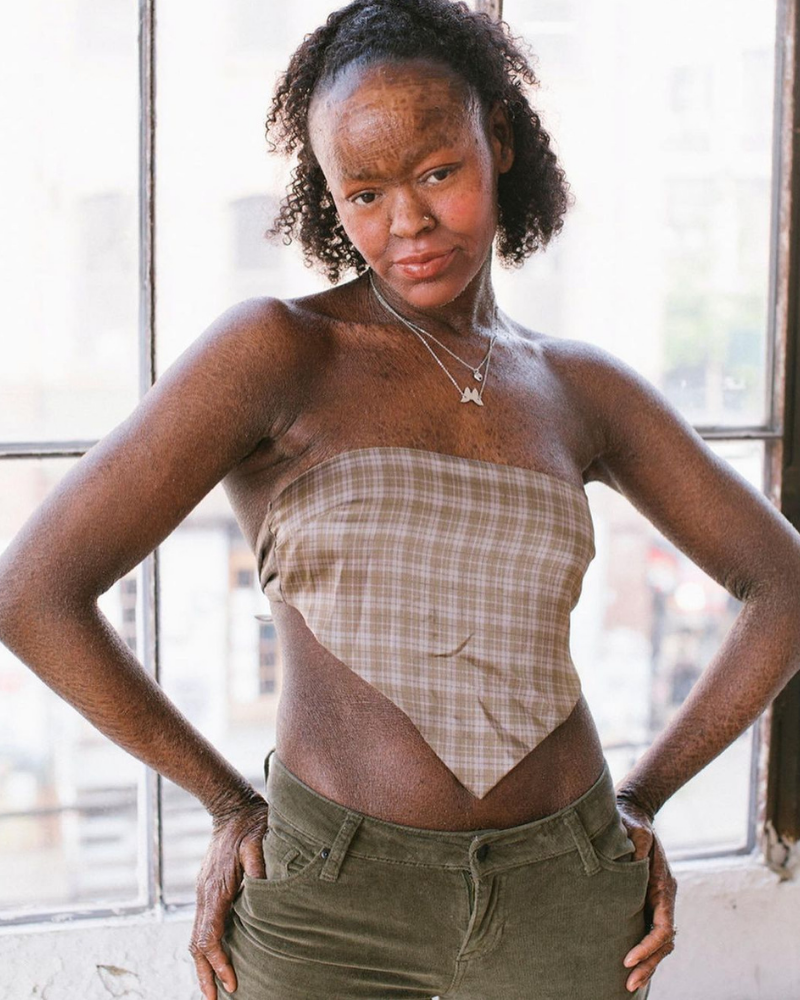
Có hơn 20 loại bệnh Ichthyosis có thể xuất hiện khác nhau và do các yếu tố khác nhau gây ra. Người mẫu Jeyza Gary đã không để tình trạng da của mình hạn chế cơ hội làm người mẫu của mình. Gary đã xuất hiện trên một số tạp chí thời trang và thậm chí cả các chiến dịch quảng cáo cho các công ty lớn như Target.
Hội chứng Marfan
Hội chứng di truyền này là một rối loạn ảnh hưởng đến các mô liên kết của cơ thể – các mô chịu trách nhiệm duy trì cấu trúc của cơ thể và hỗ trợ các cơ quan nội tạng. Rối loạn này thường ảnh hưởng đến bộ xương, mắt và tim.
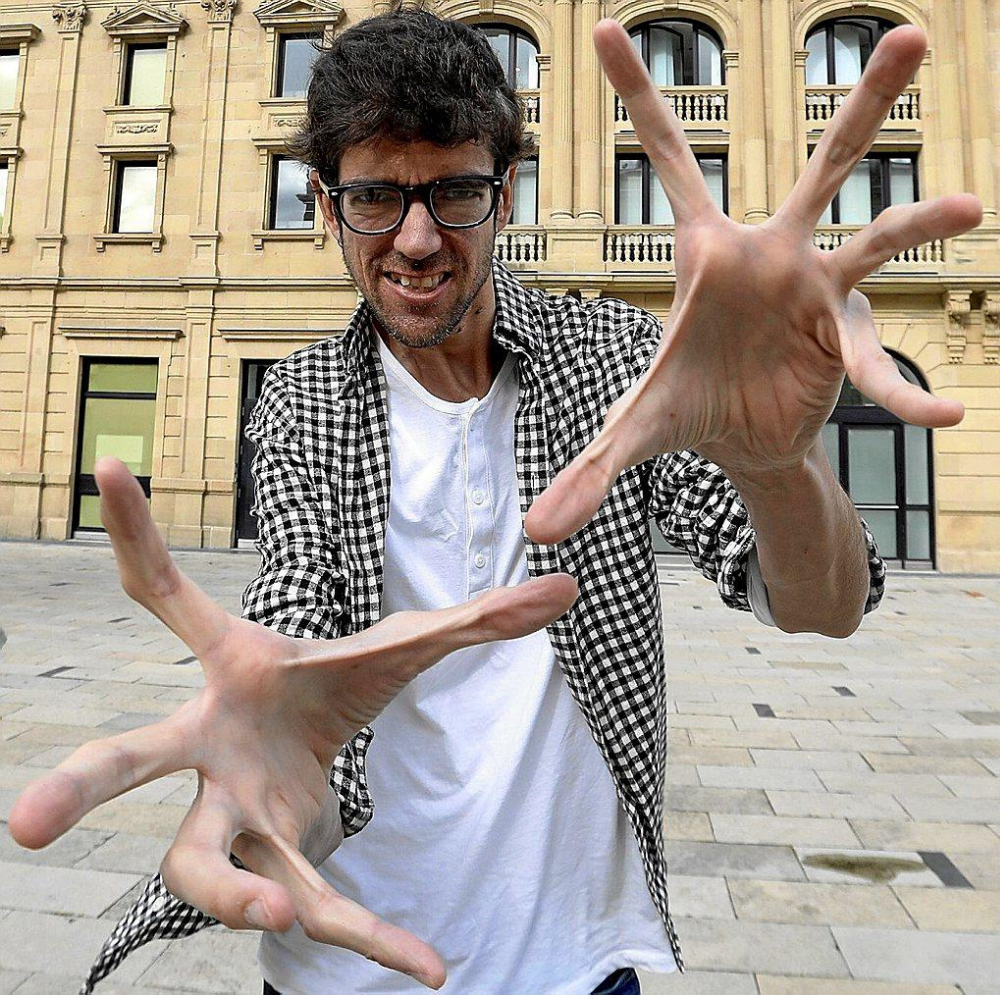
Những người mắc chứng rối loạn này thường có thân hình cao và gầy, chân tay và ngón tay dài. Nam diễn viên người Tây Ban Nha, Javier Botet, được chẩn đoán mắc chứng rối loạn này khi còn nhỏ. Ngoại hình độc đáo của nam diễn viên đã giúp anh kiếm được vai chính trong Slender Man và các bộ phim kinh dị khác.
Những ngón chân có màng
Khi nghĩ đến bàn chân có màng, chúng ta thường nghĩ đến các loài động vật sống dưới nước như ếch hay vịt. Hóa ra các bộ phận phụ của con người cũng có thể có màng, đặc biệt là ngón chân. Ngón chân có màng không phổ biến lắm và nguyên nhân đằng sau tình trạng này phần lớn vẫn chưa được biết rõ.
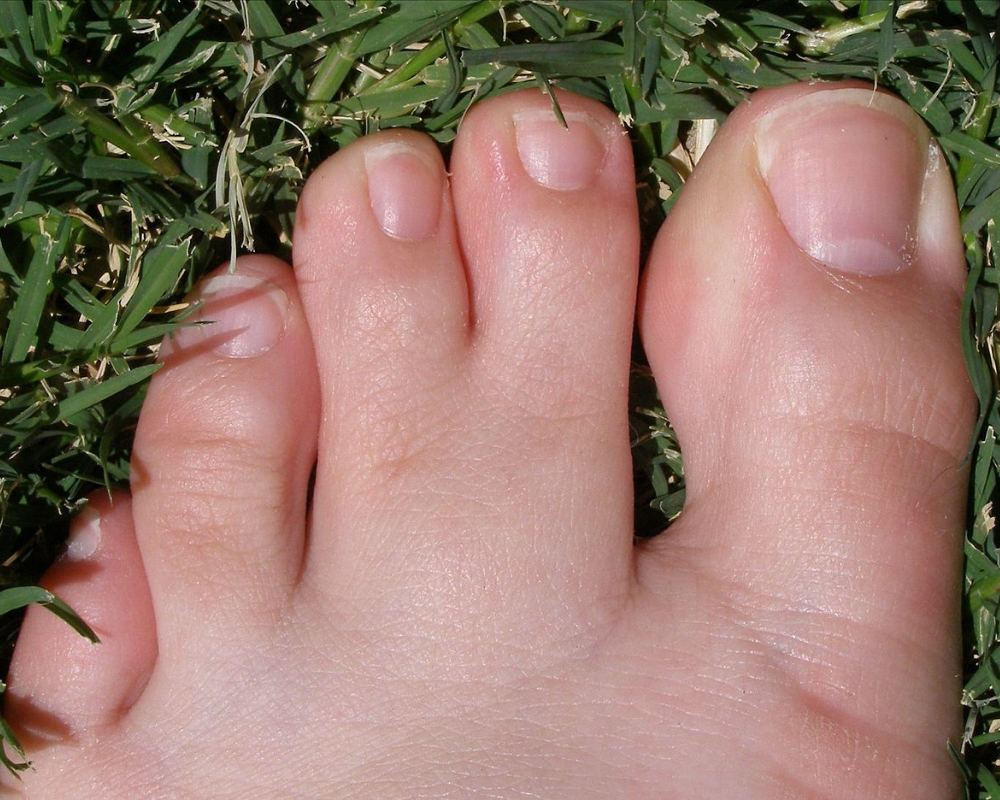
Trong hầu hết các trường hợp, ngón chân thứ hai và thứ ba được dính vào nhau bởi một lớp da. Ngày nay, có các cuộc phẫu thuật để chỉnh sửa và tách rời màng vải, nhưng nhiều người chỉ chọn cách giải quyết vấn đề này.
Lông mày cực chất
Lông mày giúp đôi mắt chúng ta khỏe mạnh bằng cách ngăn bụi, mồ hôi hoặc nước chảy xuống mắt. Mặc dù những đặc điểm trên khuôn mặt này đóng vai trò quan trọng nhưng chúng vẫn phải tuân theo các xu hướng thời trang thời đó.

Cho dù đó là nhổ, tỉa, cạo hay tẩy lông, con người đều bị ám ảnh bởi việc thao tác lông mày. Người mẫu Sophia Hadjipanteli đã quyết định từ chối những gì xã hội cho là ‘lông mày hoàn hảo’ và đón nhận đôi lông mày dày của cô ấy! Cô tôn vinh đặc điểm lông lá của mình trên trang mạng xã hội bằng cách sử dụng hashtag #UnibrowMovement.
Nhiều nốt ruồi
Không có gì lạ khi một người có nốt ruồi hoặc vết bớt khác trên da. Những đốm này được gây ra bởi các cụm tế bào sản xuất sắc tố gọi là tế bào hắc tố. Có nhiều loại nốt ruồi hoặc nevi khác nhau và chúng có thể xuất hiện trên khắp cơ thể kể cả ở mắt chúng ta!
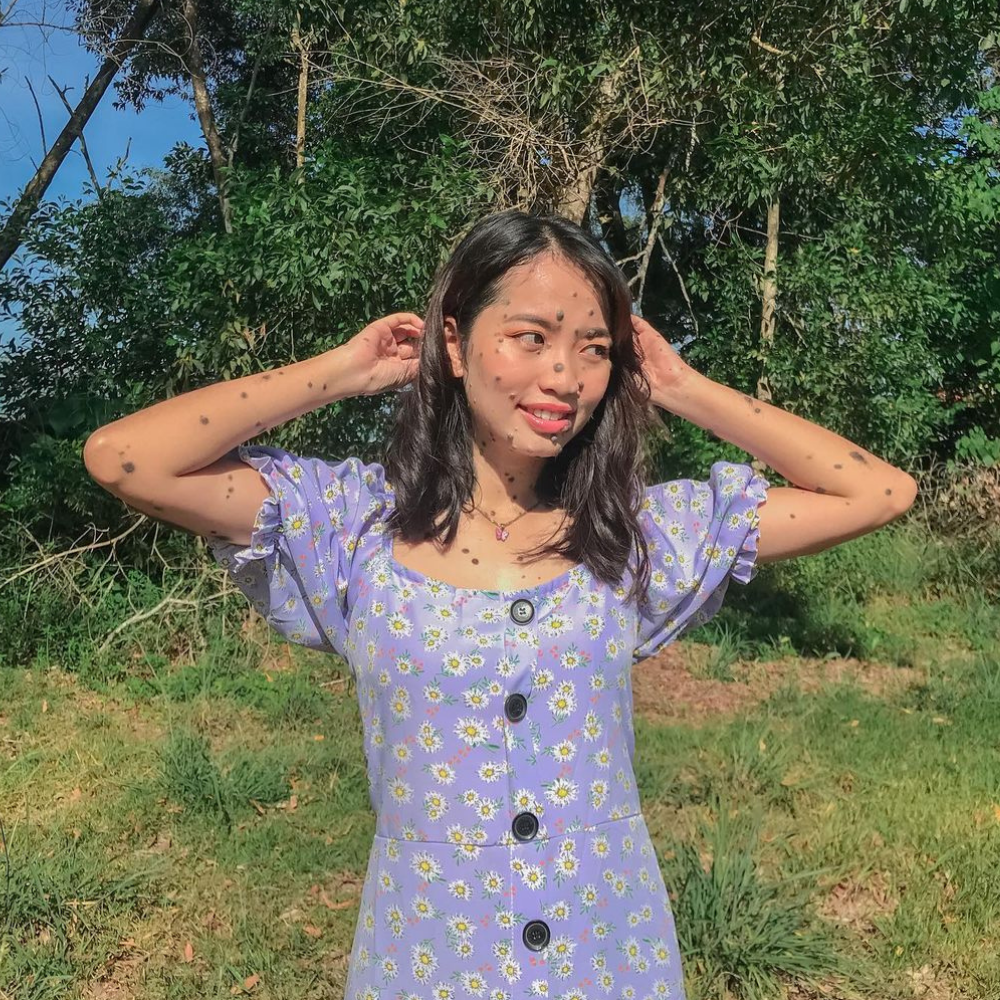
Người mẫu Evita Delmundo đã thu hút được hàng nghìn người theo dõi trên các trang mạng xã hội nhờ ngoại hình lấm tấm bất thường. Người mẫu Malaysia đã bắt kịp vẻ ngoài của mình và thậm chí còn tham gia cuộc thi sắc đẹp Hoa hậu Malaysia.
Tính năng giống như Avatar
Trong khi nhiều người trong chúng ta cố gắng theo kịp các xu hướng mới nhất, có vẻ như sự khác biệt thực sự có thể là một điều tốt. Đối với người mẫu Tsunaina, việc sở hữu ngoại hình độc đáo có thể dẫn đến sự nghiệp người mẫu thành công. Người mẫu Tây Tạng gốc Anh được một người hướng đạo người mẫu phát hiện trên đường phố, người đã bị thu hút bởi nét mặt độc đáo của cô.
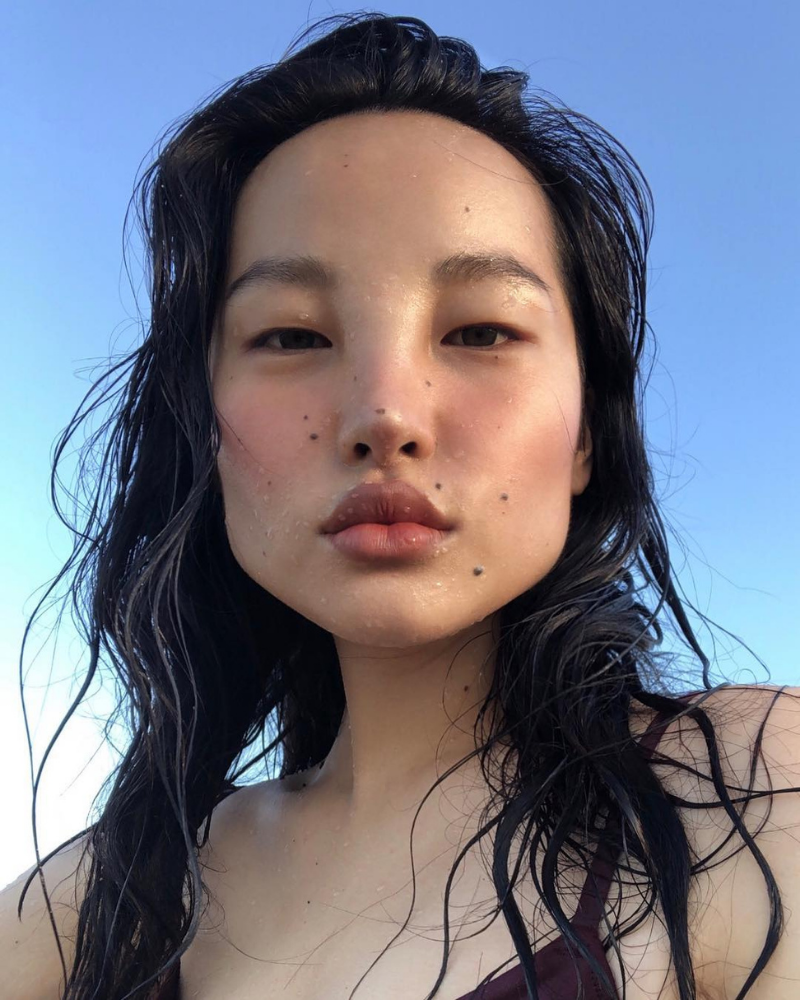
Mặc dù thấp hơn đáng kể so với hầu hết người mẫu nhưng Tsunaina đã xuất hiện trên một số tạp chí và chiến dịch thời trang lớn nhất. Vẻ ngoài của Tsunaina được mô tả là thanh tao và thậm chí giống như Avatar .
mắt lác
Lác, hay lác mắt, là một tình trạng về mắt khiến cả hai mắt không thẳng hàng khi nhìn vào cùng một vật hoặc một nơi. Chứng rối loạn này có thể là kết quả của các vấn đề xuất phát từ việc kiểm soát cơ mắt kém hoặc do viễn thị nặng.
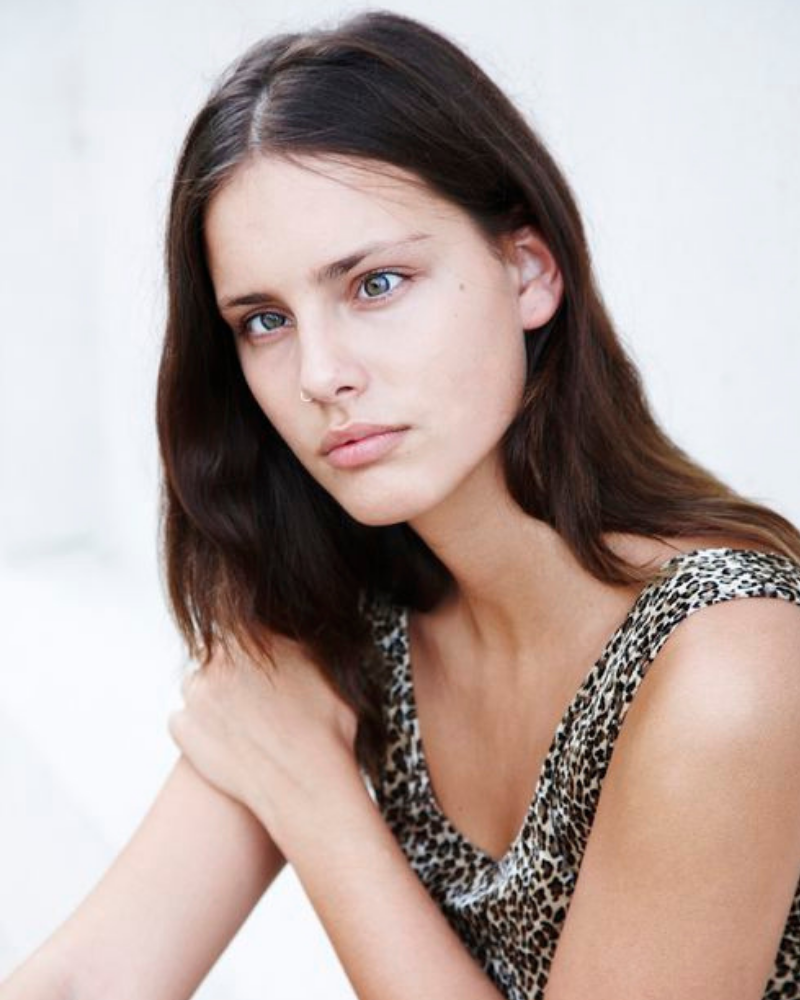
Người mẫu Moffy Gathorne đã không để tình trạng mắt ngăn cản cô chinh phục thế giới thời trang. Người mẫu Anh, người được ký hợp đồng với cùng một công ty với Kate Moss, đã sử dụng danh tiếng của mình để thách thức các tiêu chuẩn sắc đẹp của ngành thời trang.
Progeria
Tất cả chúng ta đều sợ già đi. Đối với những người mắc chứng rối loạn di truyền progeria, nỗi sợ hãi về tuổi già trở thành hiện thực sớm hơn nhiều. Progeria gây lão hóa nhanh chóng và các vấn đề sức khỏe khác. Những người mắc hội chứng này thường trông già hơn tuổi thật hàng chục năm.
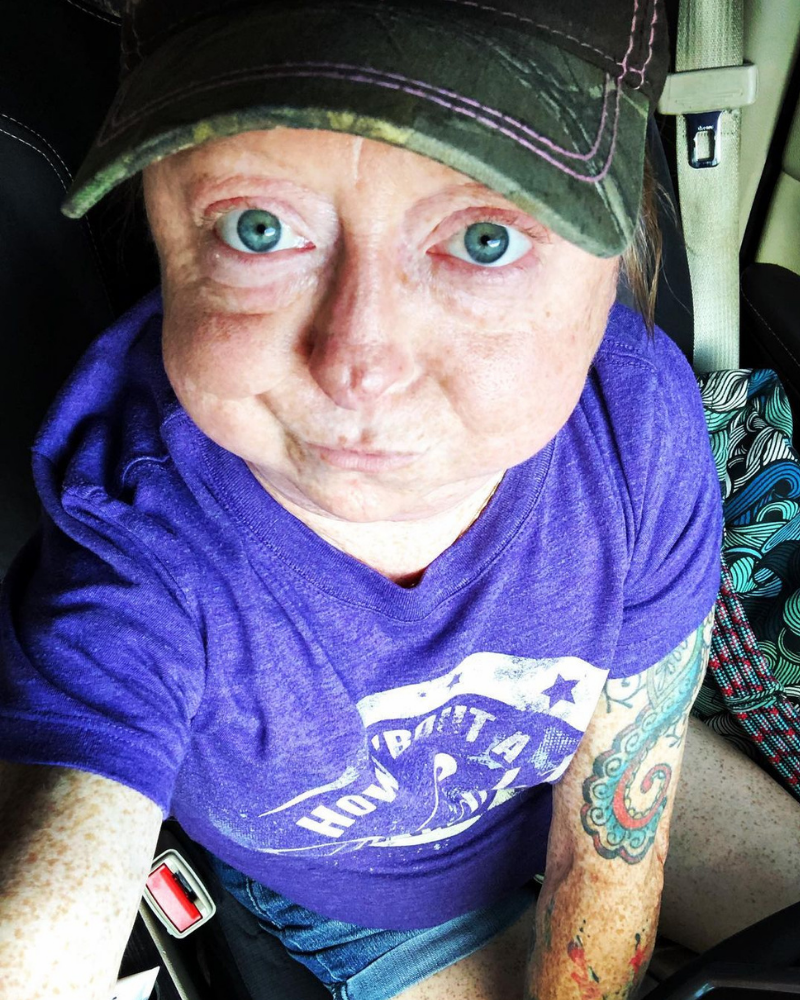
Trong khi nhiều người bị ảnh hưởng bởi chứng rối loạn này không may qua đời khi còn khá trẻ, một số người vẫn có thể sống một cuộc sống có ý nghĩa trong thời thơ ấu như Challi Muguira. Người gốc Louisiana được chẩn đoán khi còn nhỏ nhưng vẫn sống sót ở tuổi ba mươi.
ma-nơ-canh người
Chứng loạn sản sợi xương tiến triển là một tình trạng hiếm gặp trong đó mô mềm của cơ thể biến thành xương, về cơ bản khiến cơ thể bị đóng băng tại chỗ. Tình trạng này được cho là do đột biến gen gây ra, là một trong những căn bệnh hiếm gặp nhất trên thế giới.
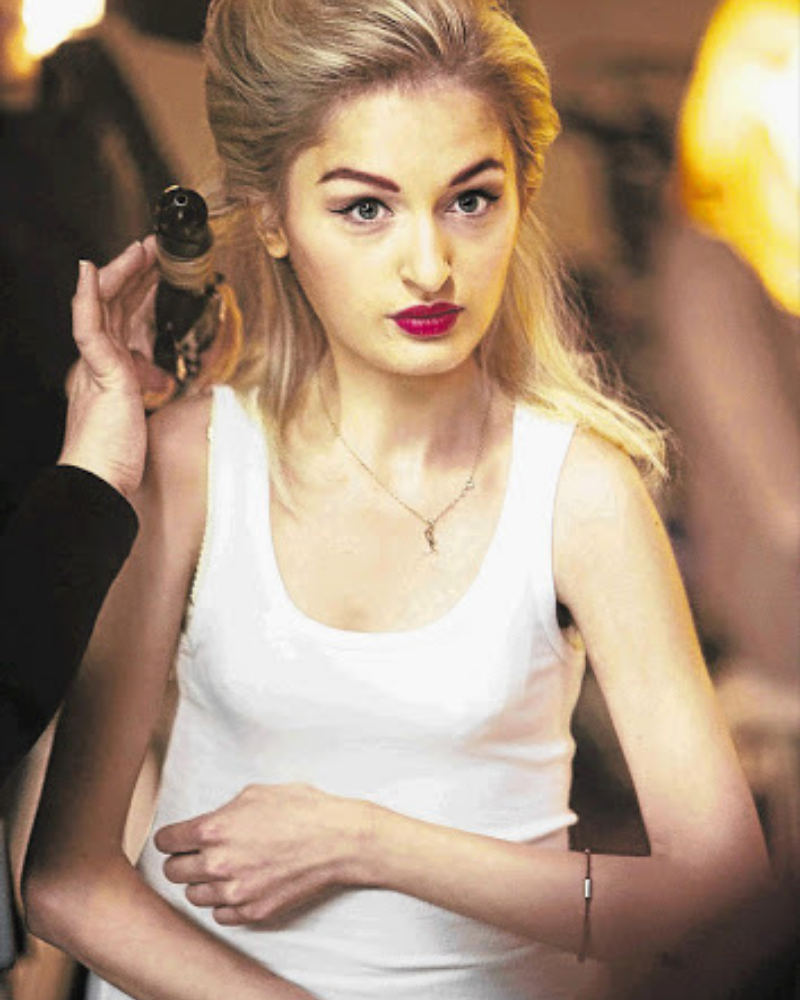
Bất chấp tiên lượng nghiệt ngã, Louise Wedderburn vẫn quyết định cố gắng theo đuổi sự nghiệp thời trang. Được biết đến như là “ma-nơ-canh người” ở Anh, Wedderburn đã từng làm việc tại tạp chí Elle và ở hậu trường trong Tuần lễ thời trang Luân Đôn.
Người da xanh ở Kentucky
Một trong những trường hợp thú vị nhất trong lịch sử y học liên quan đến “Người da xanh ở Kentucky”, một gia đình mắc chứng rối loạn m.á.u khiến họ có màu da xanh hoặc tím.
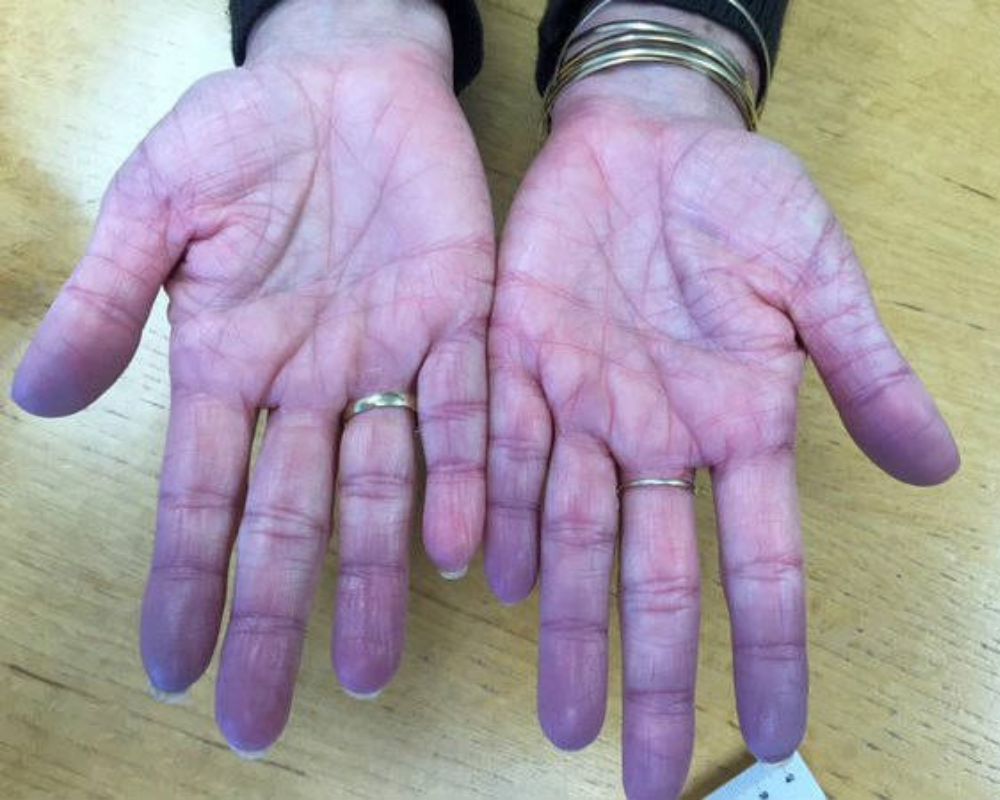
Được gọi là Methemoglobinemia, chứng rối loạn này có thể ngăn cản oxy di chuyển từ phổi đến phần còn lại của cơ thể. Một gia đình ở vùng nông thôn Kentucky mang gen gây ra chứng rối loạn này và khiến họ có biệt danh là “người da xanh”. Năm 1975, một hậu duệ của gia đình Appalachian sinh ra có màu xanh lam nhưng sau đó mất đi màu da kỳ lạ.